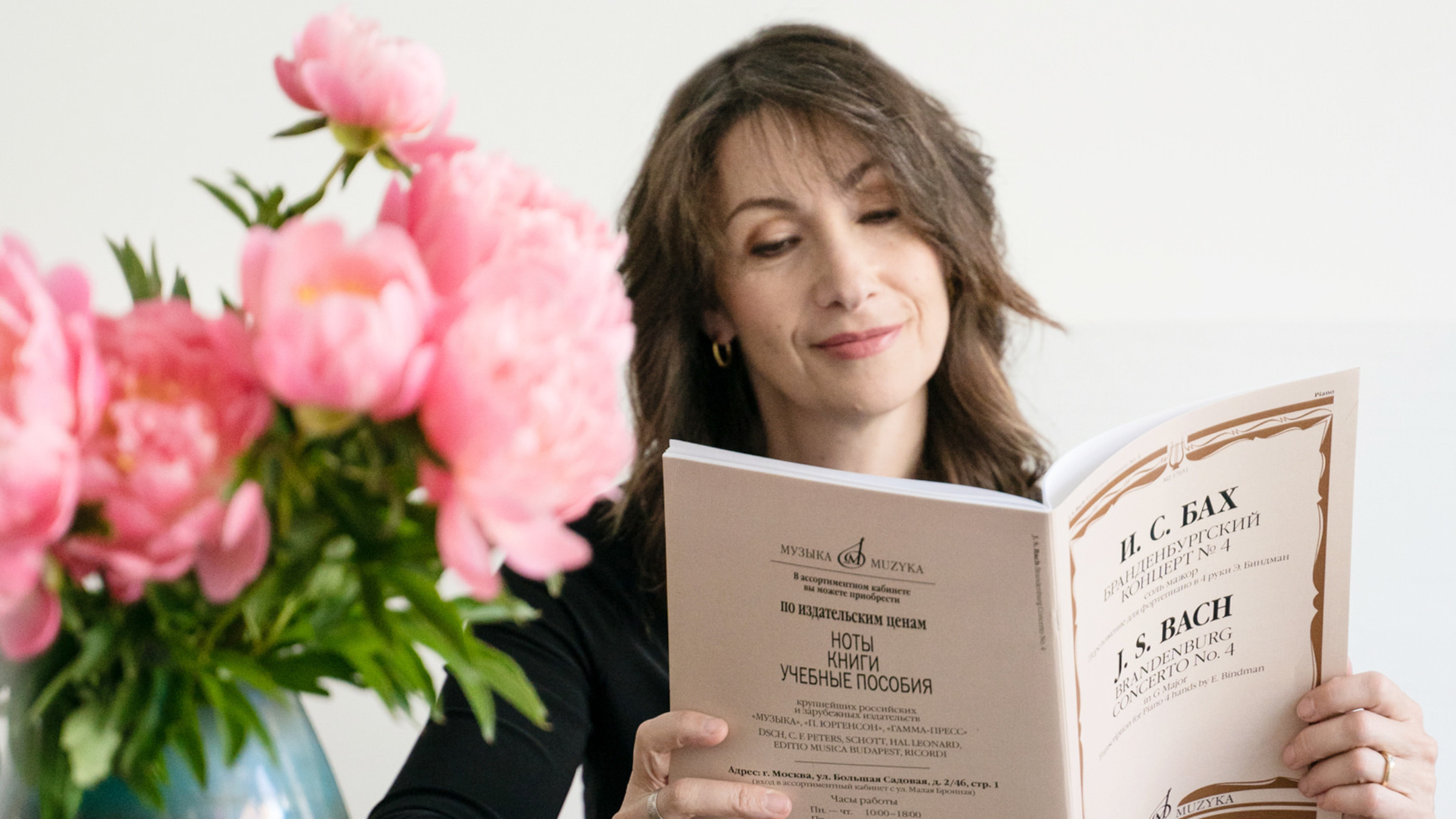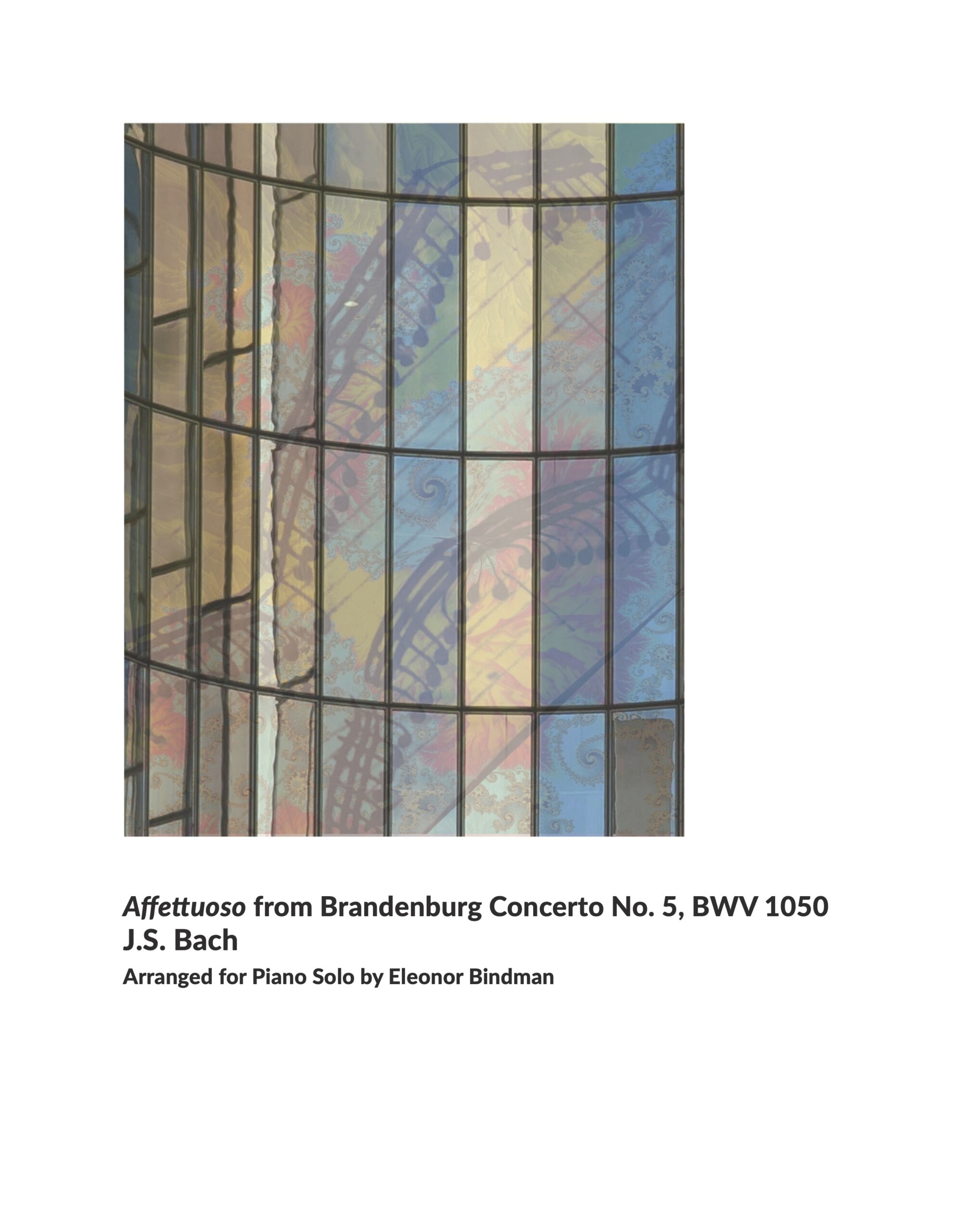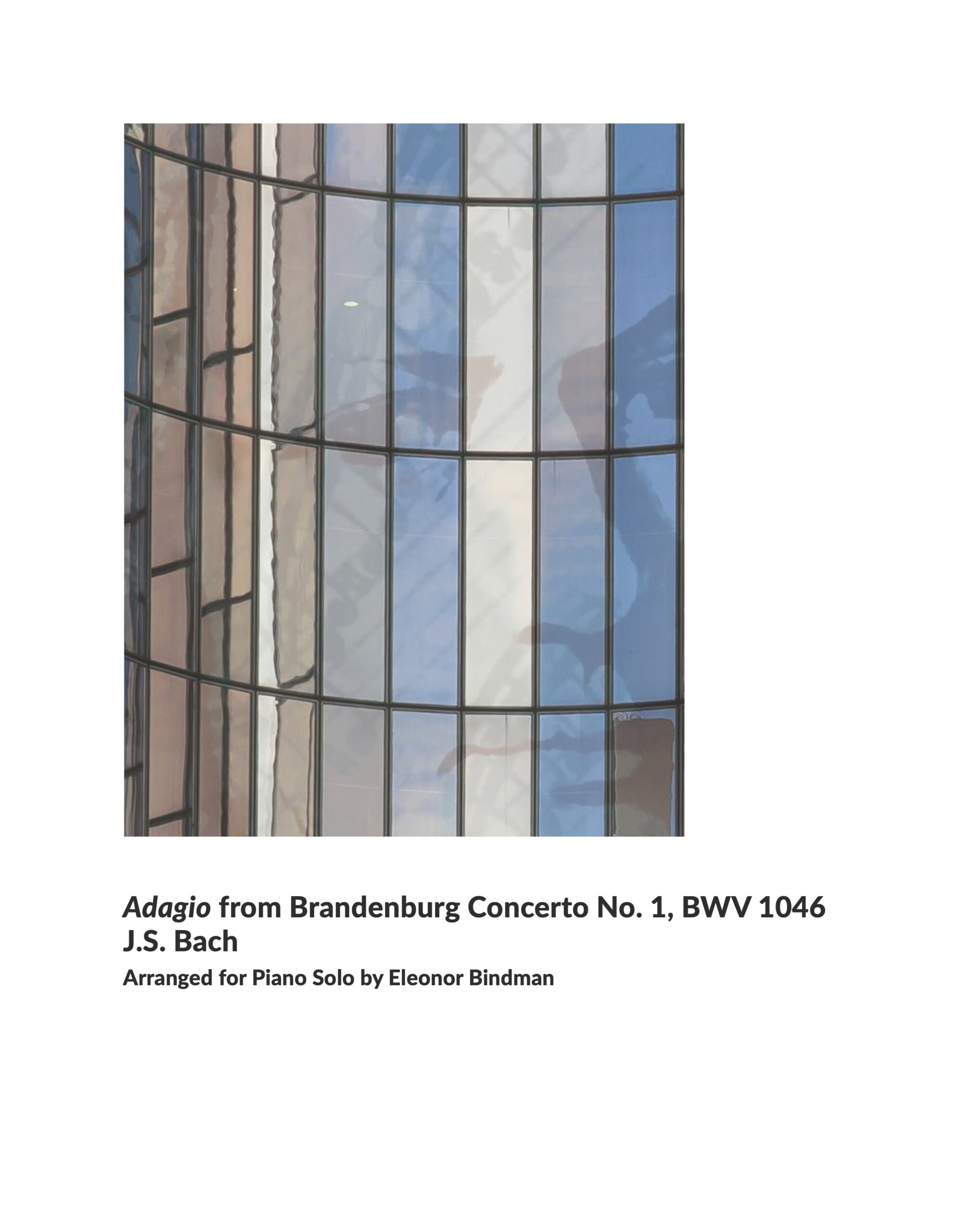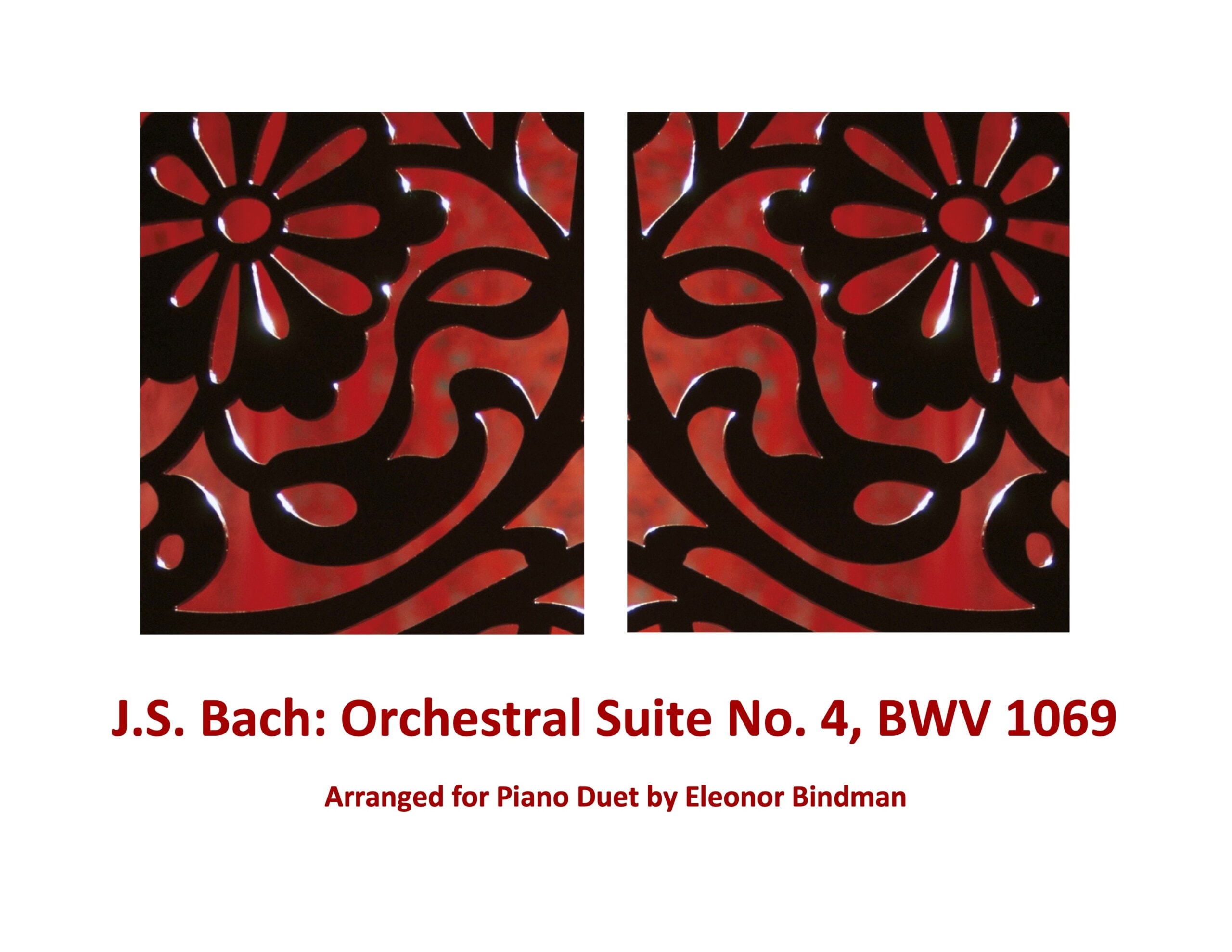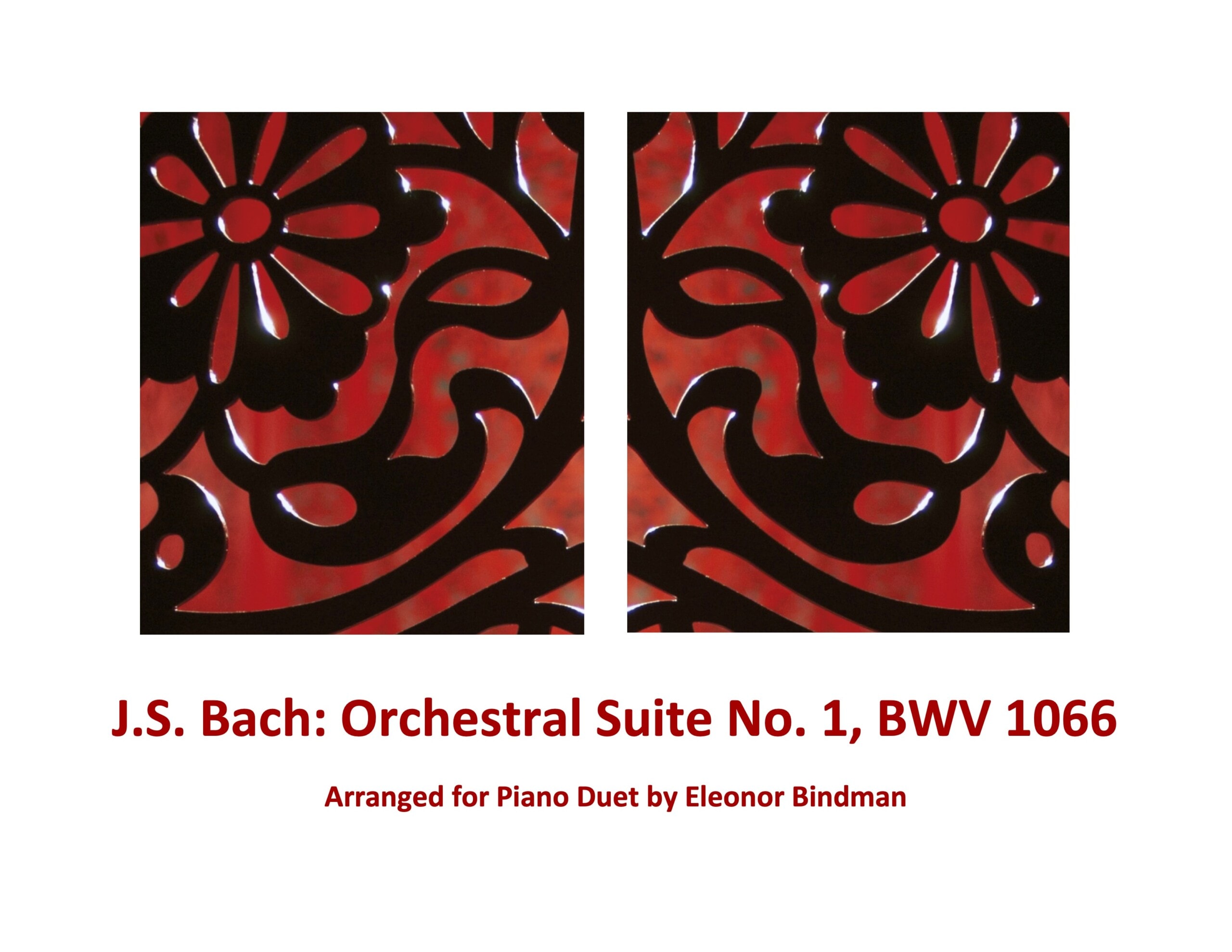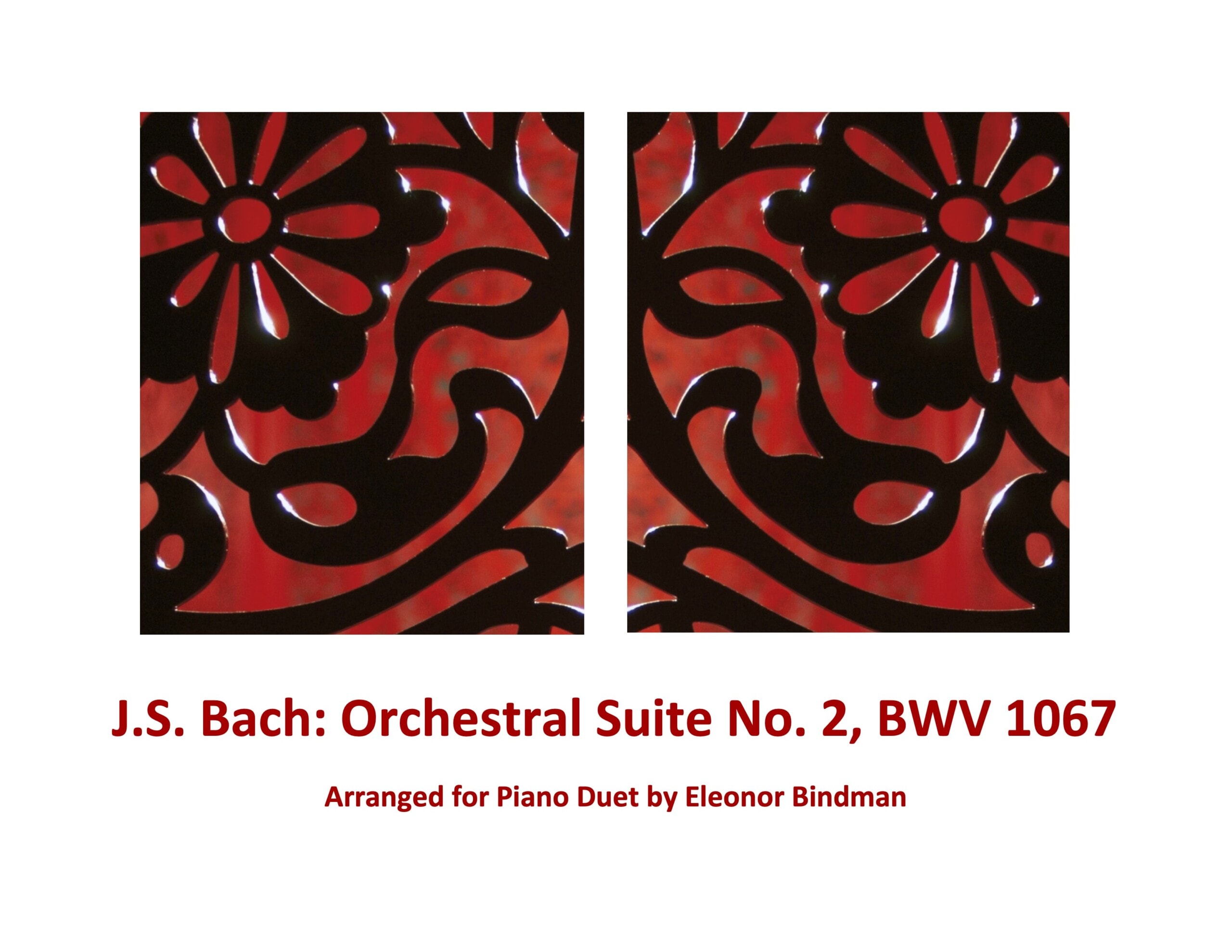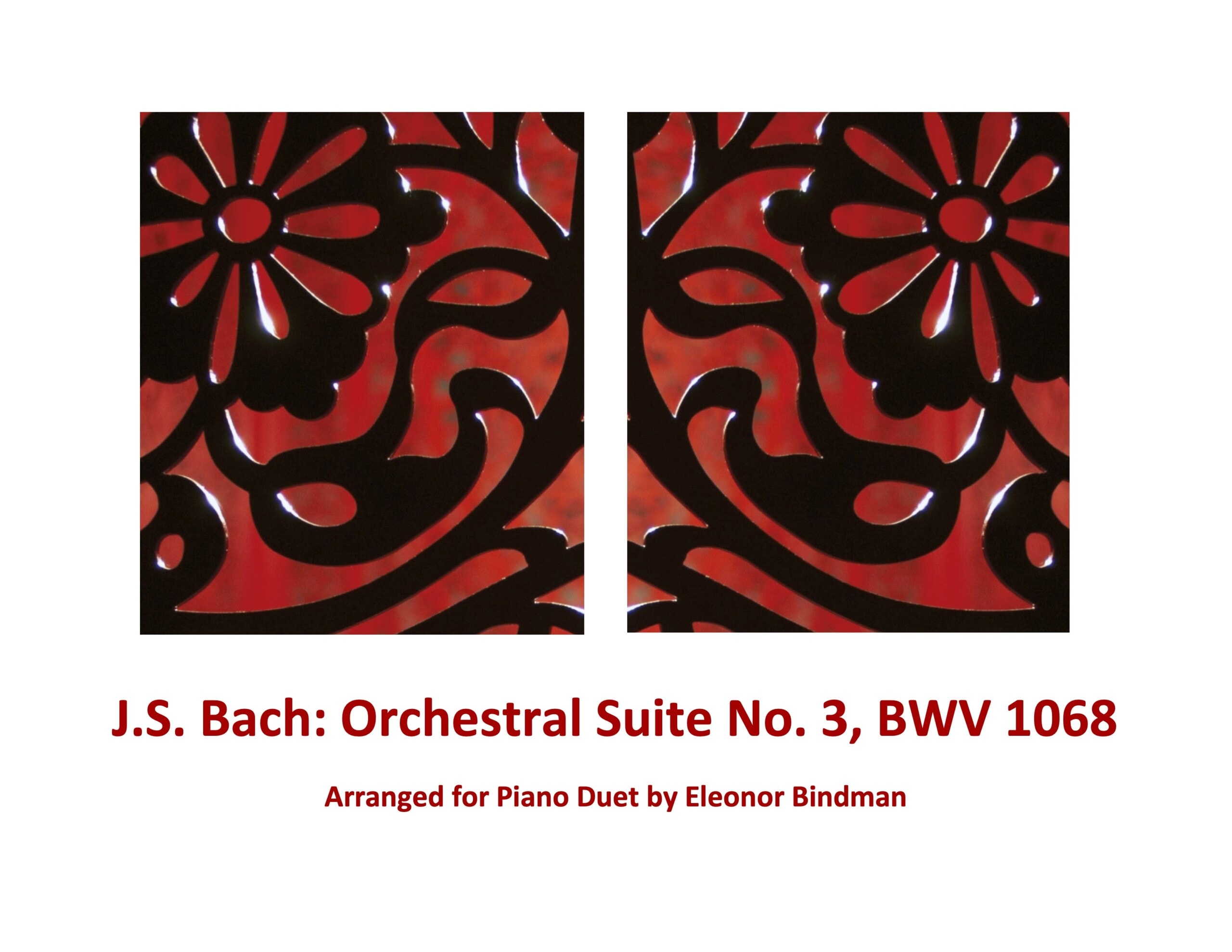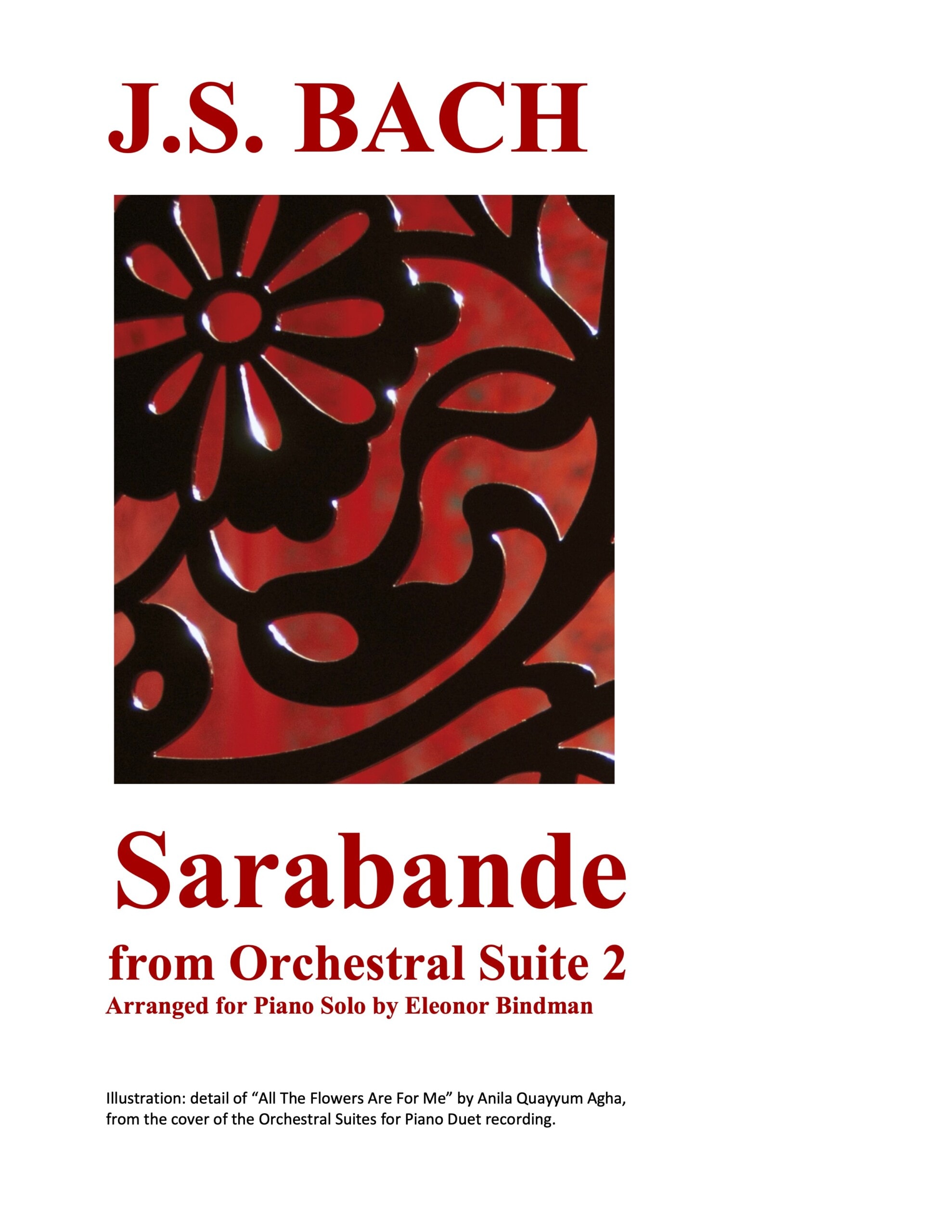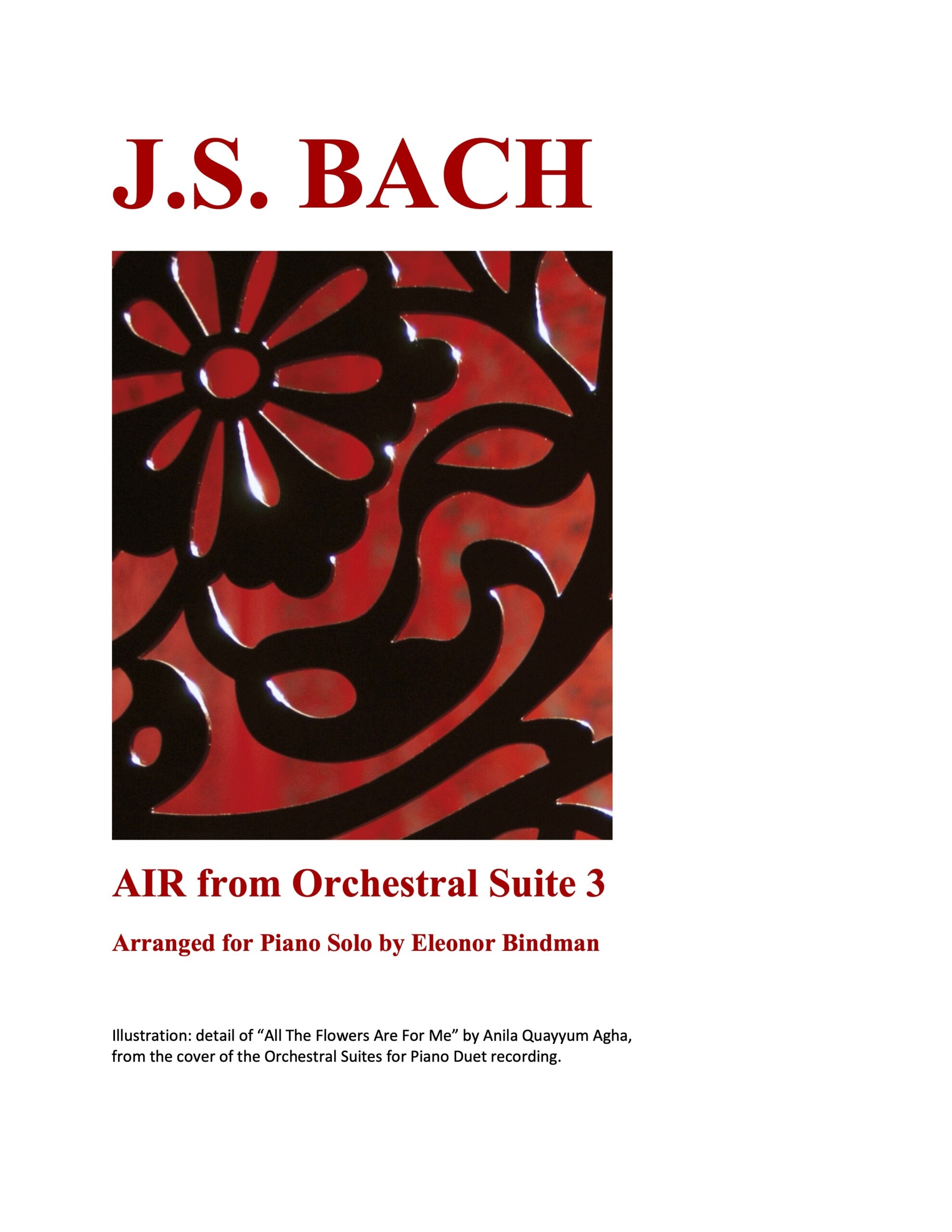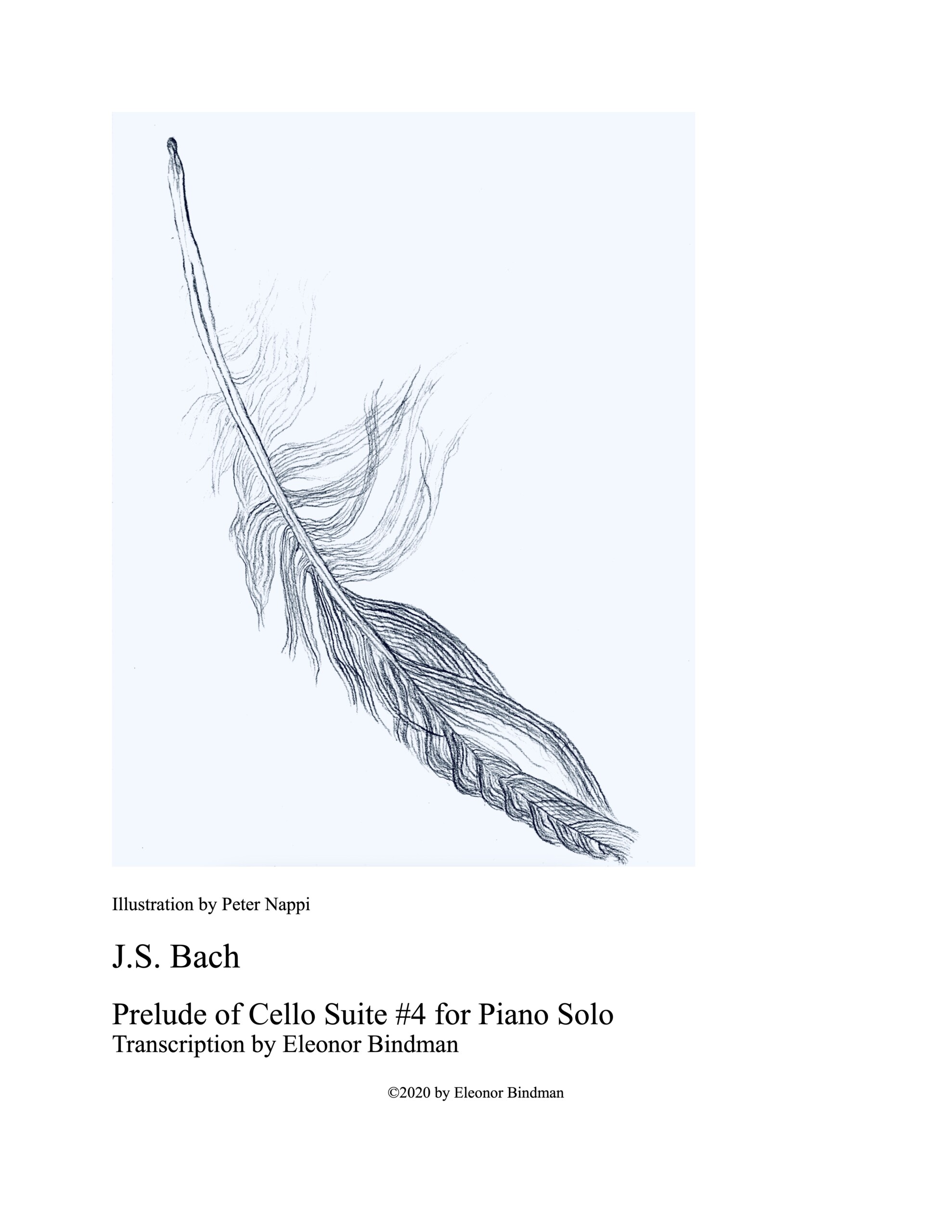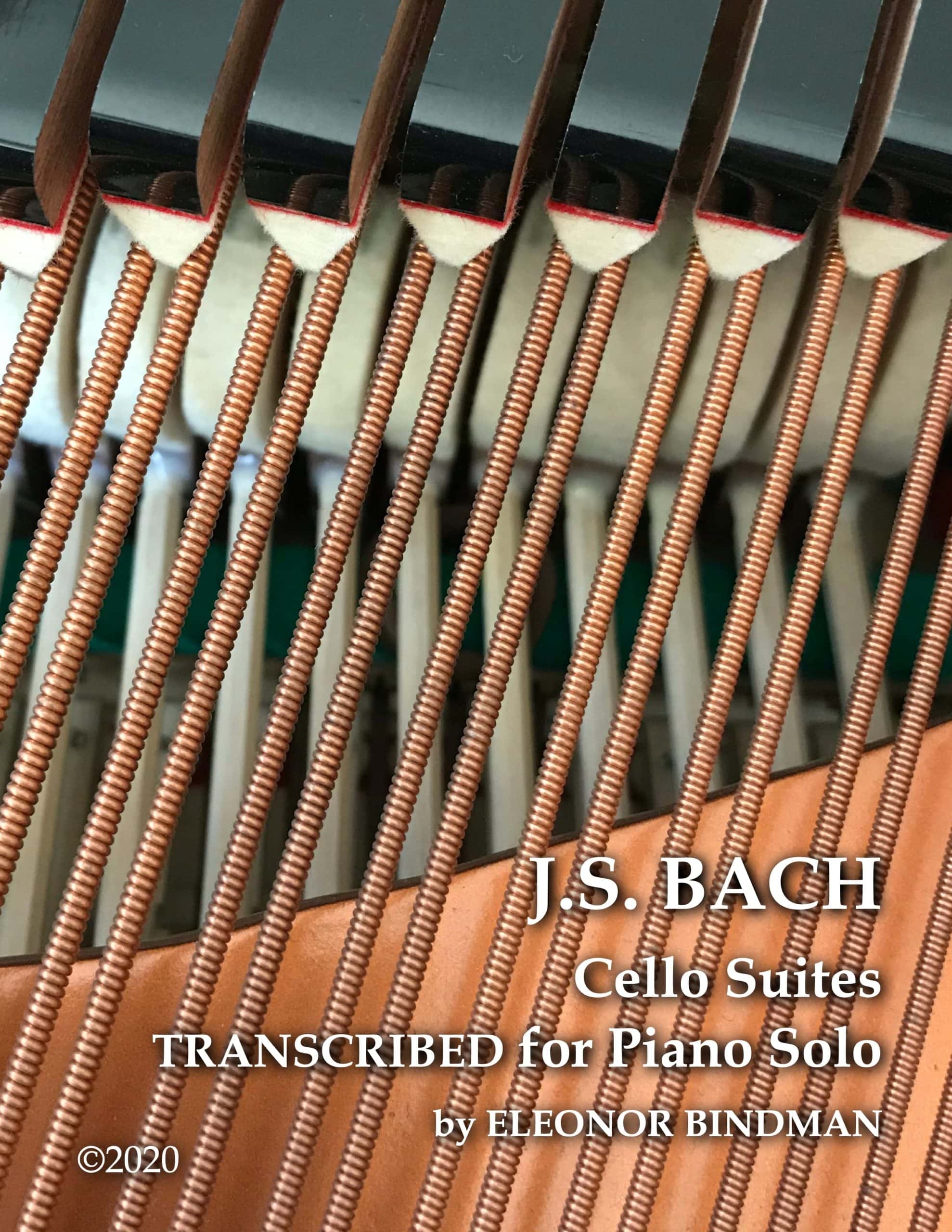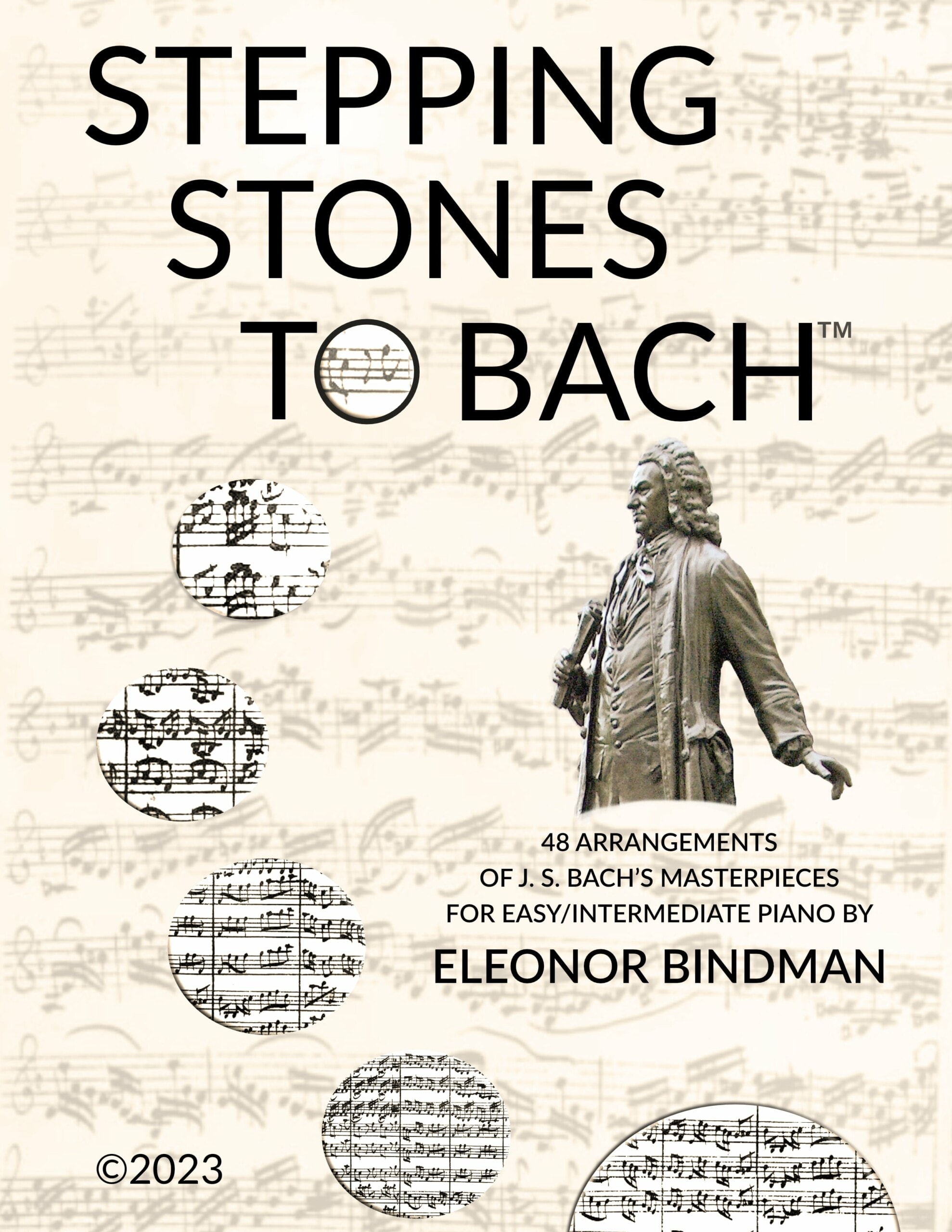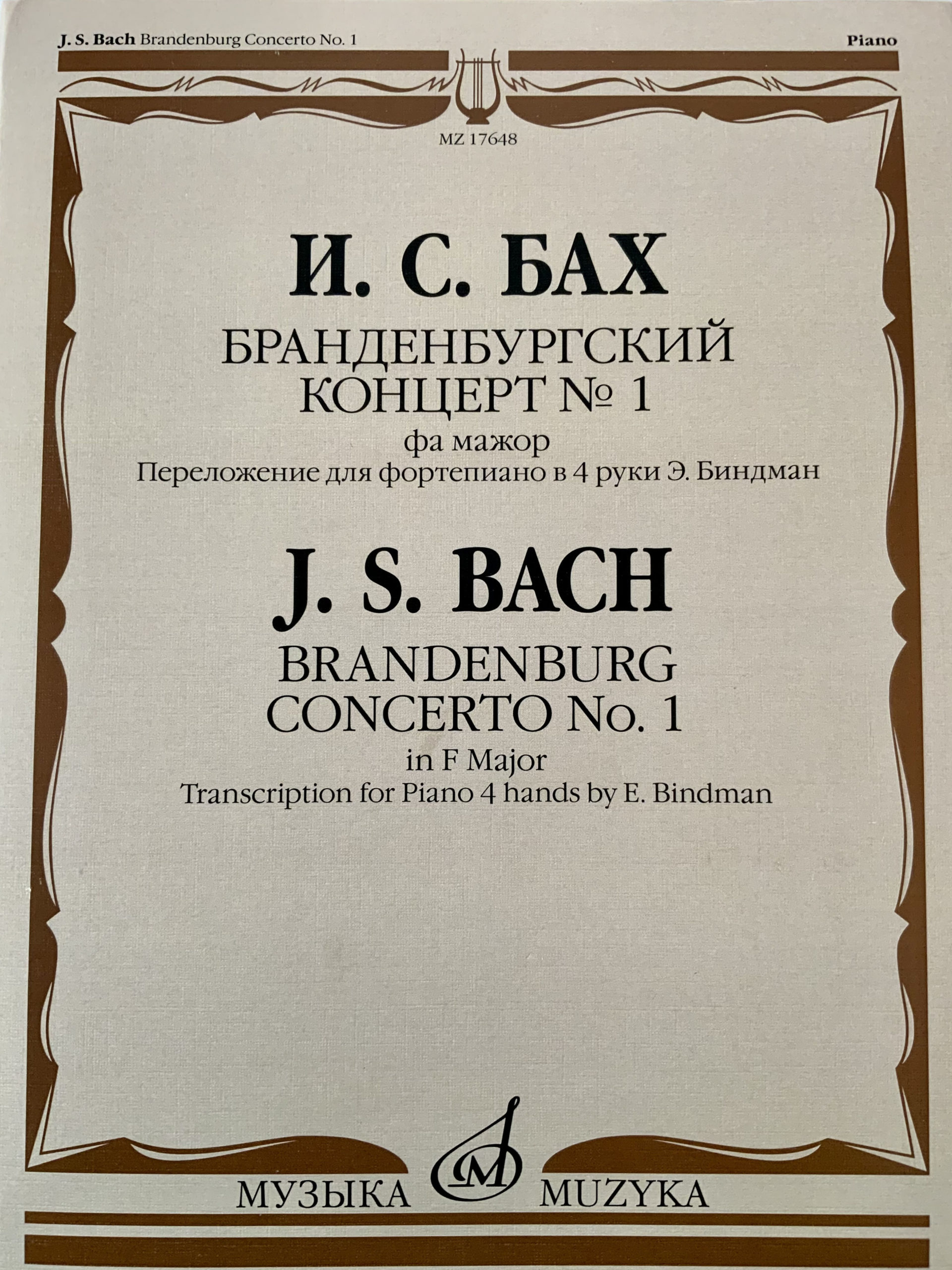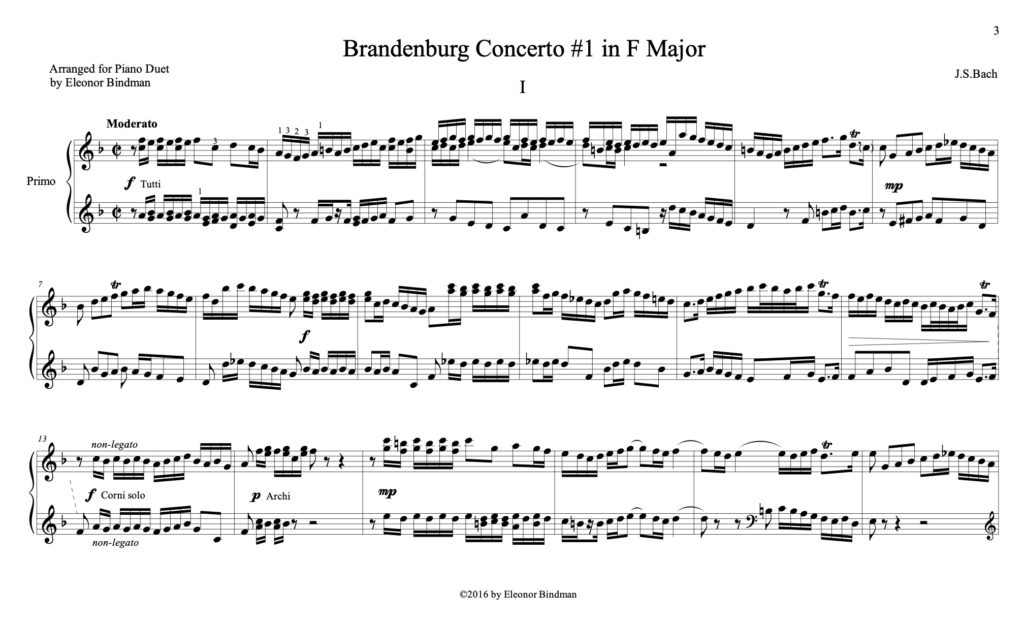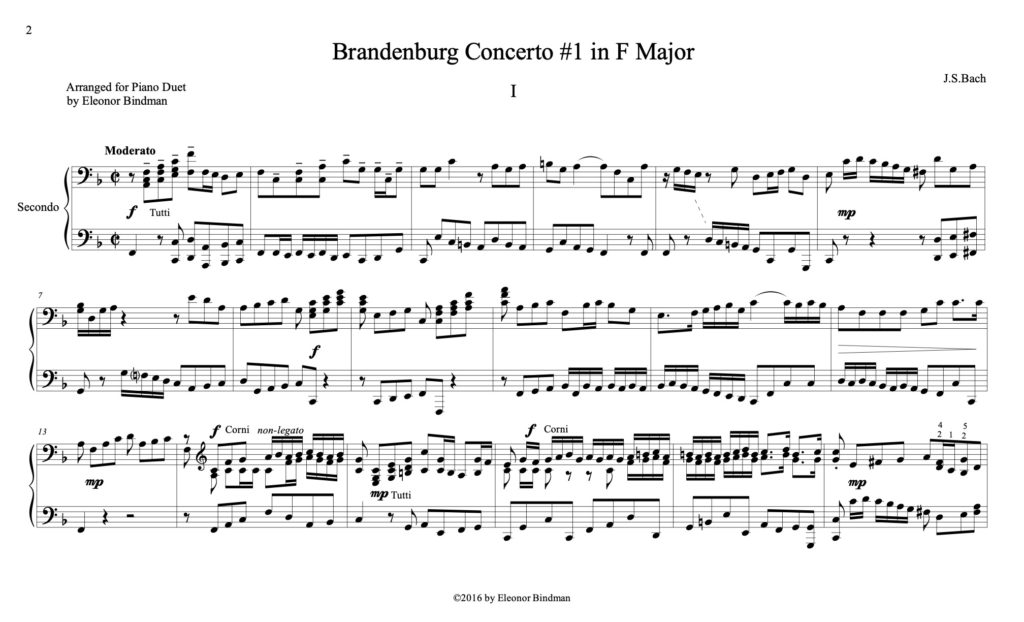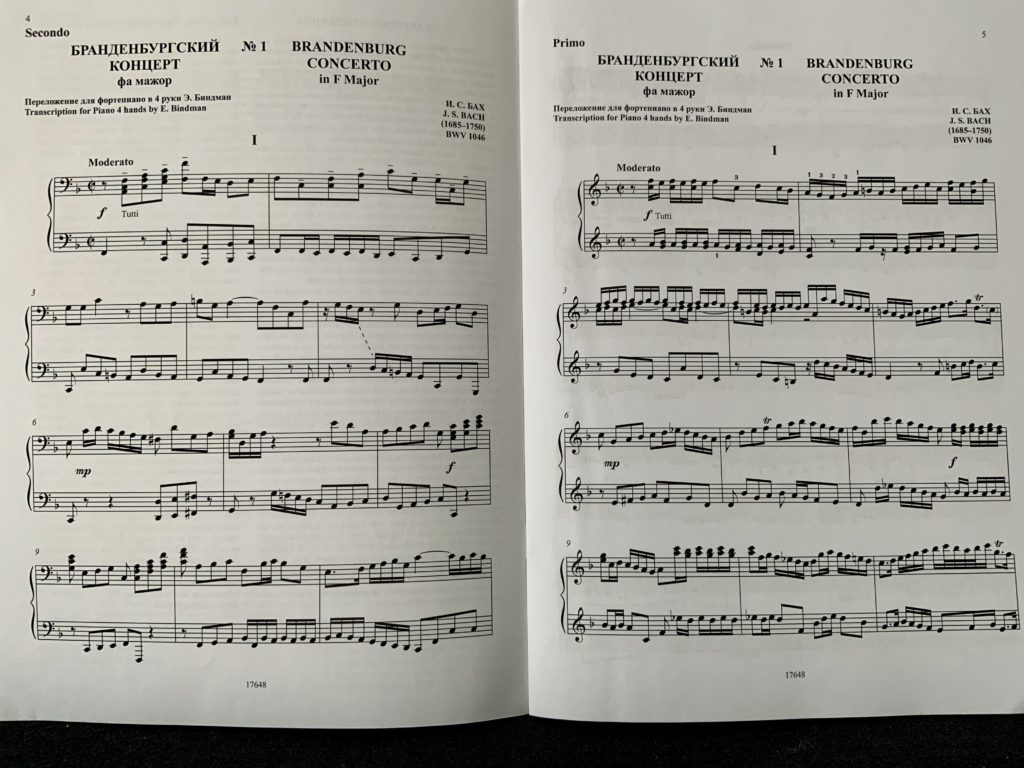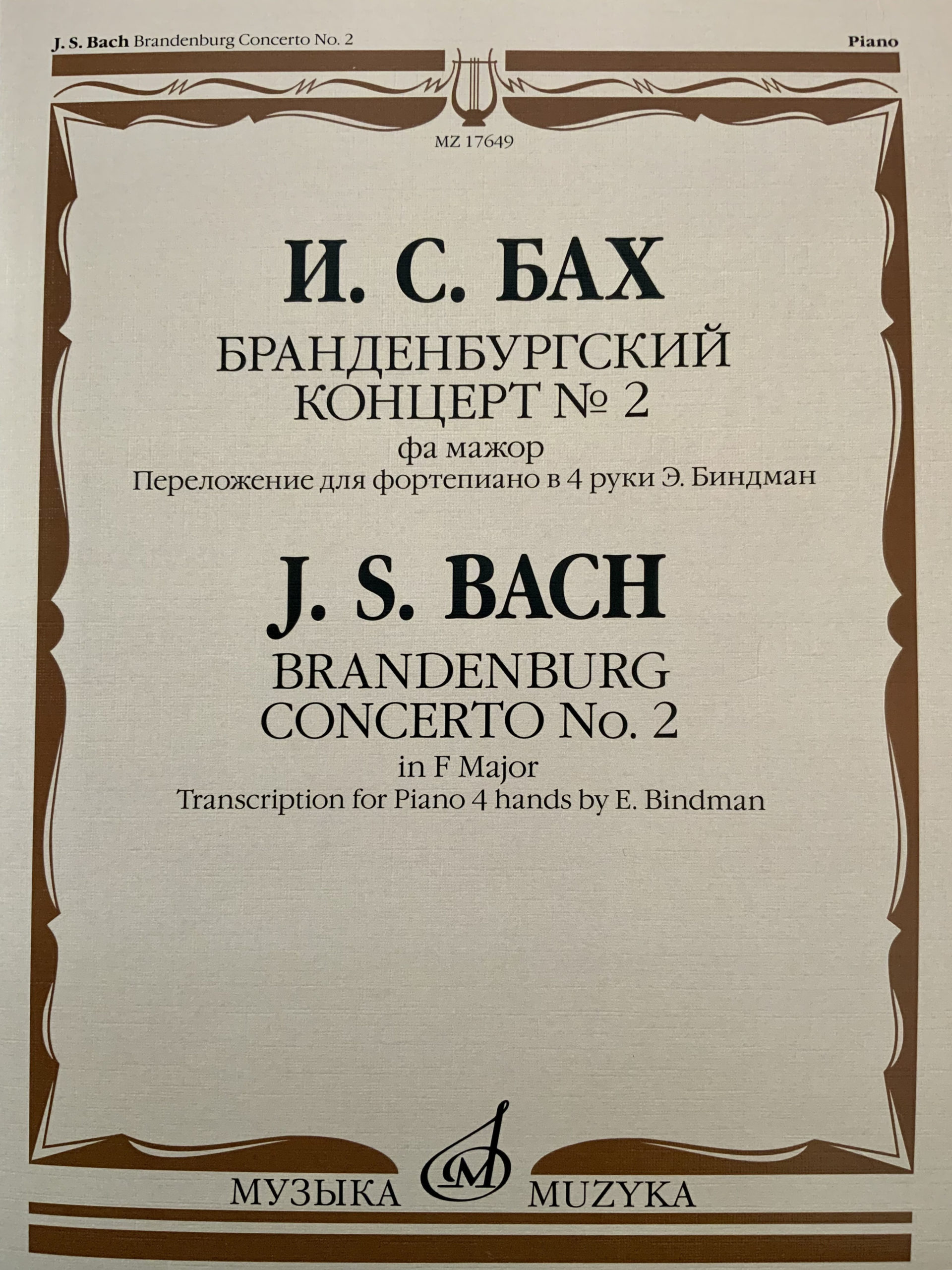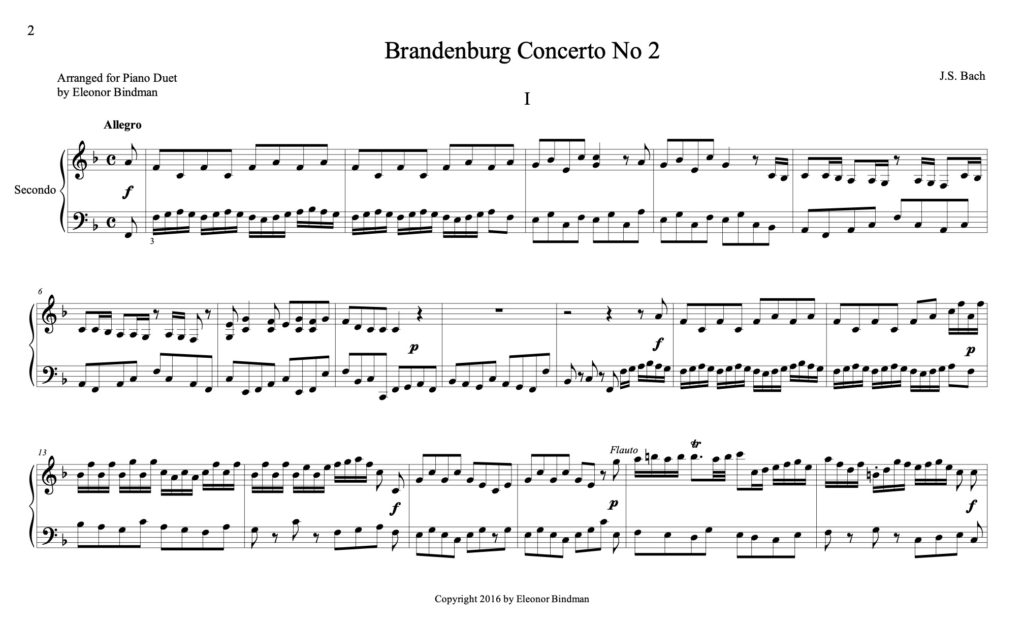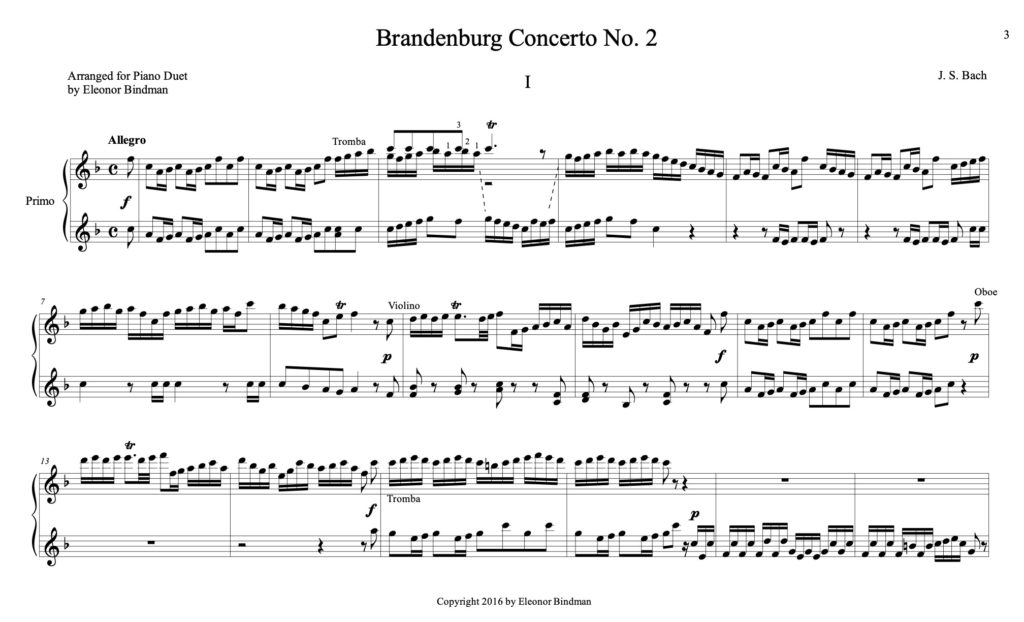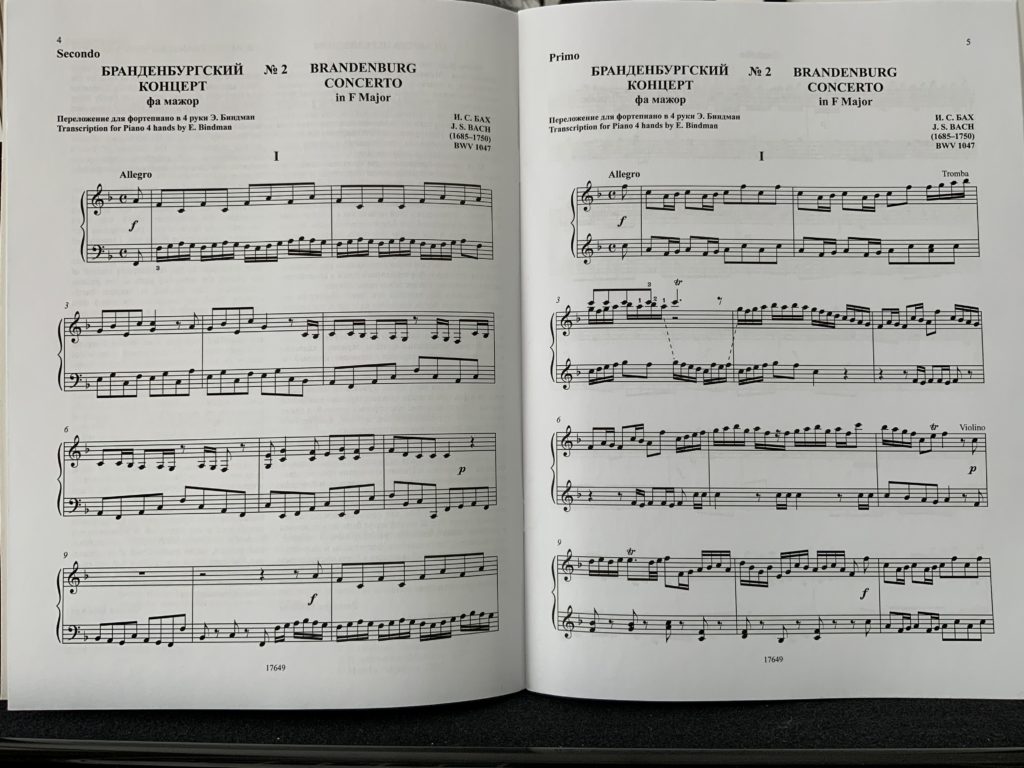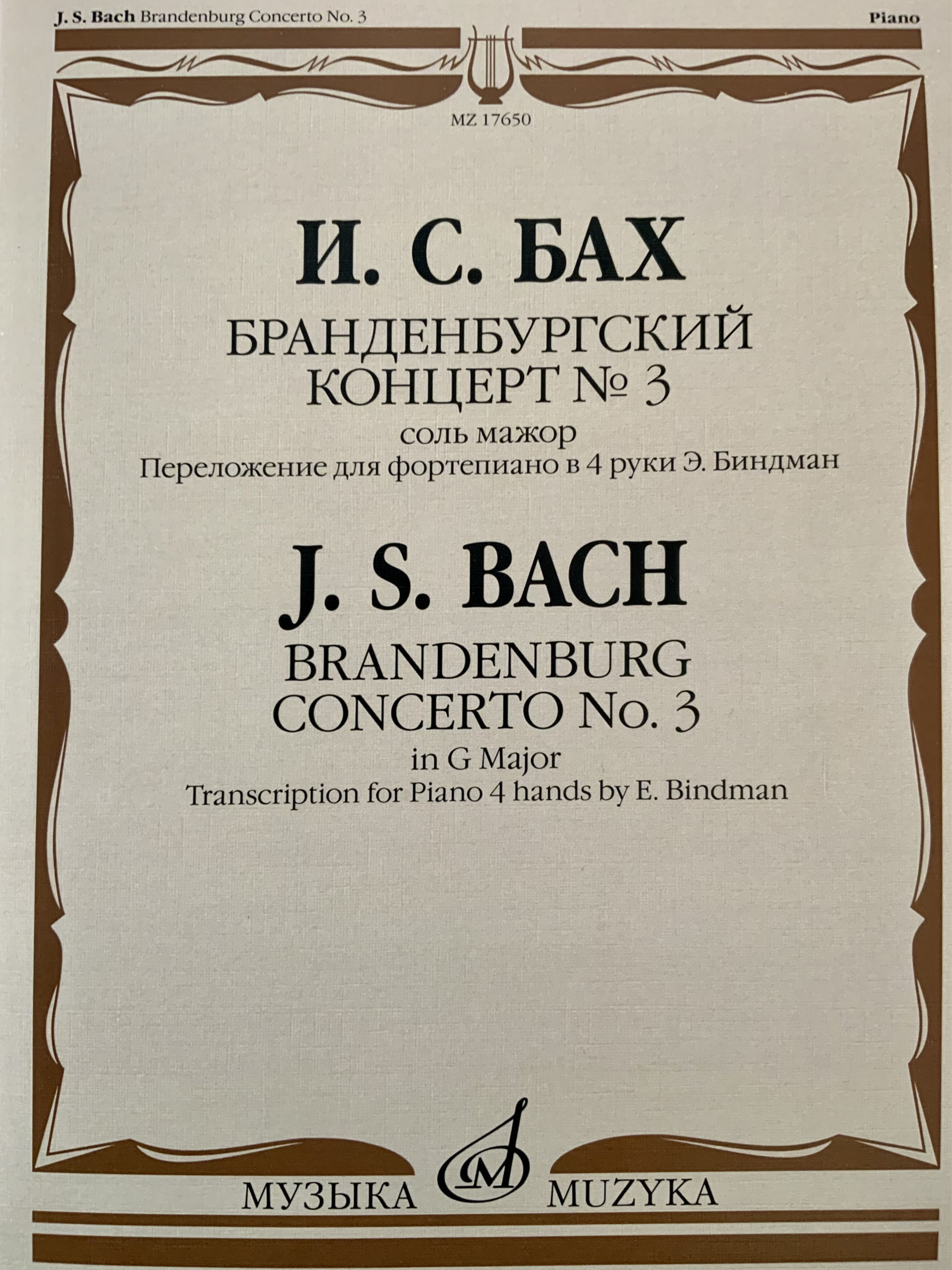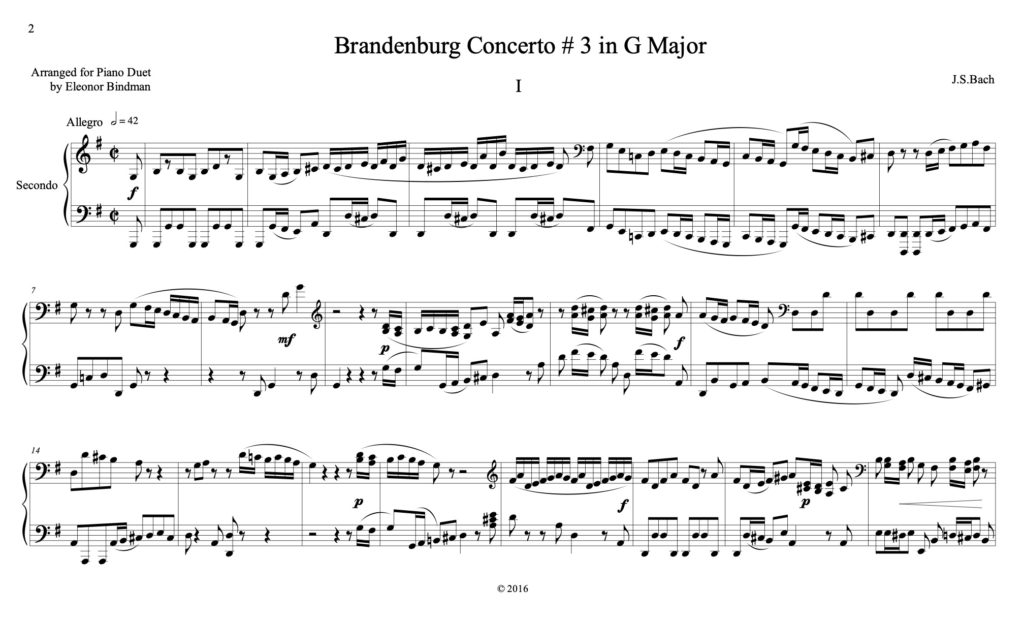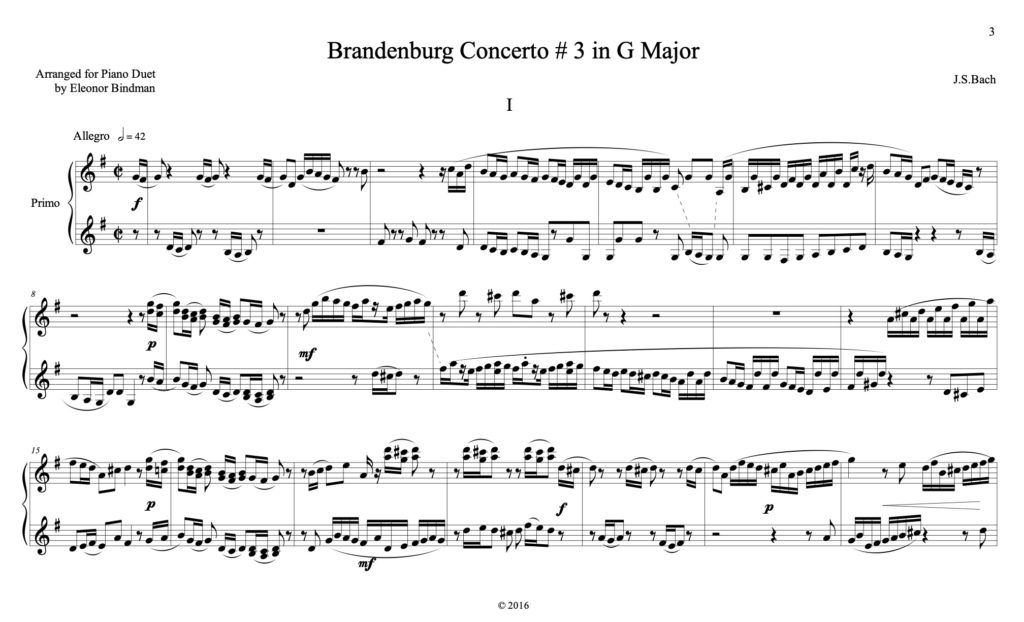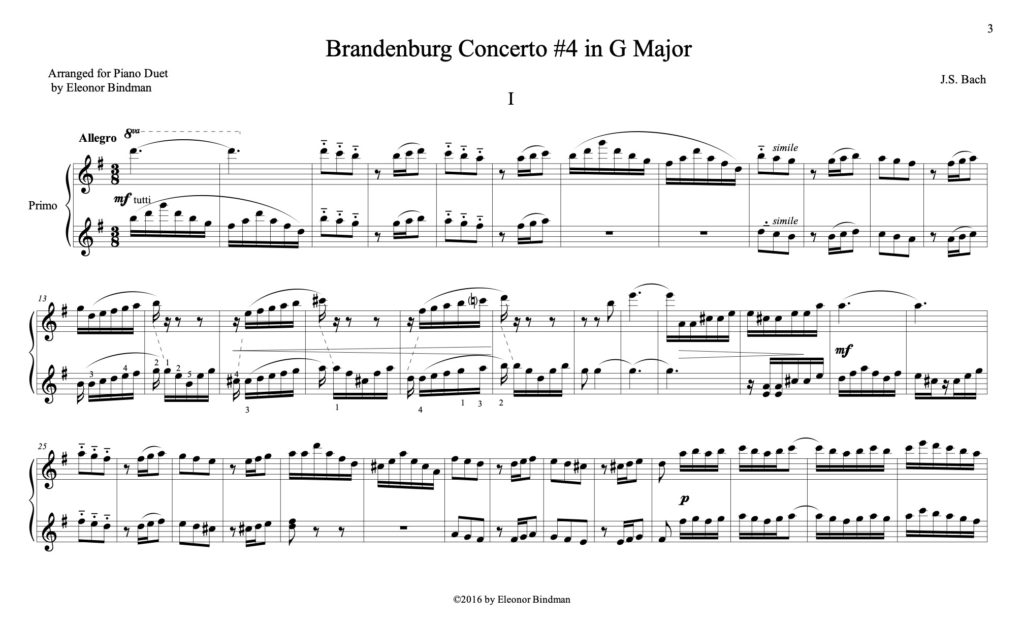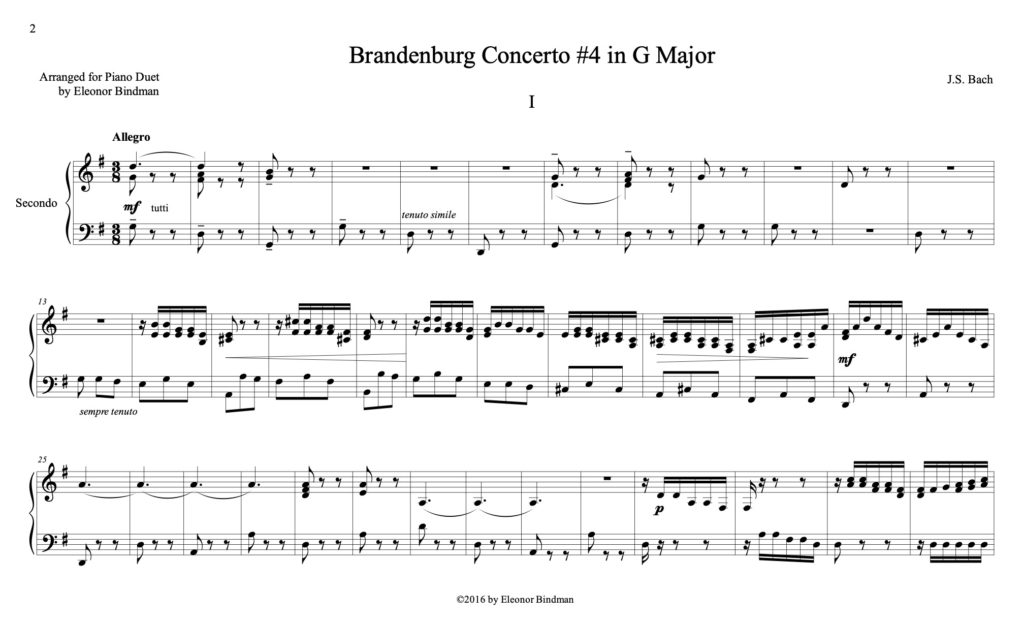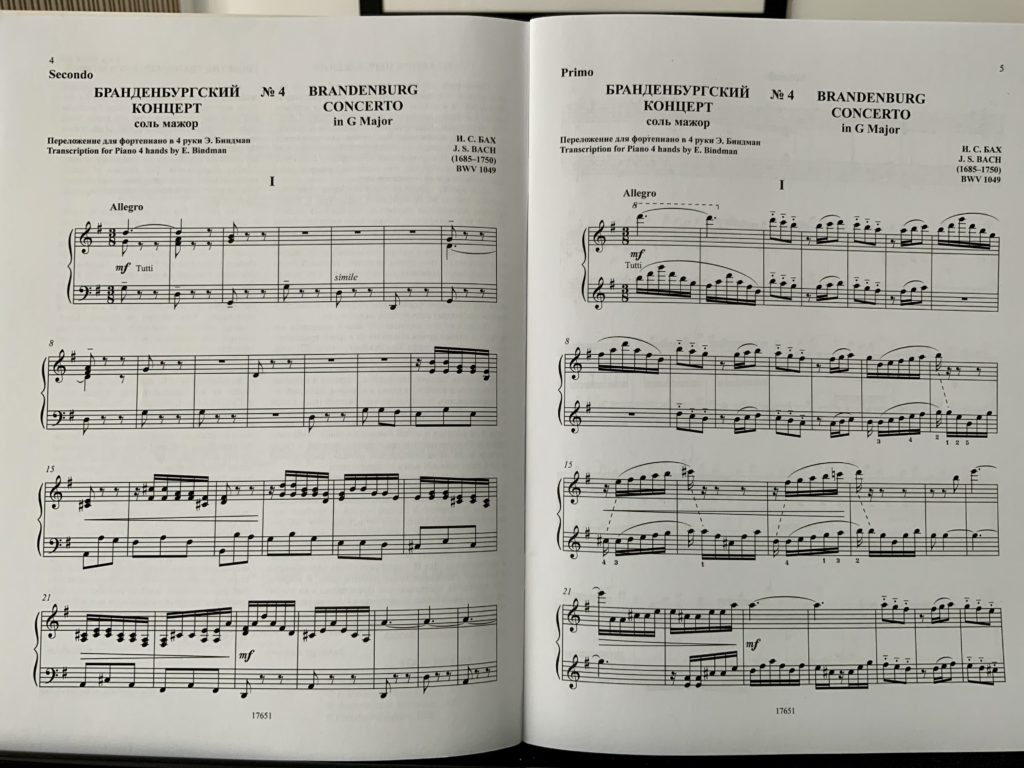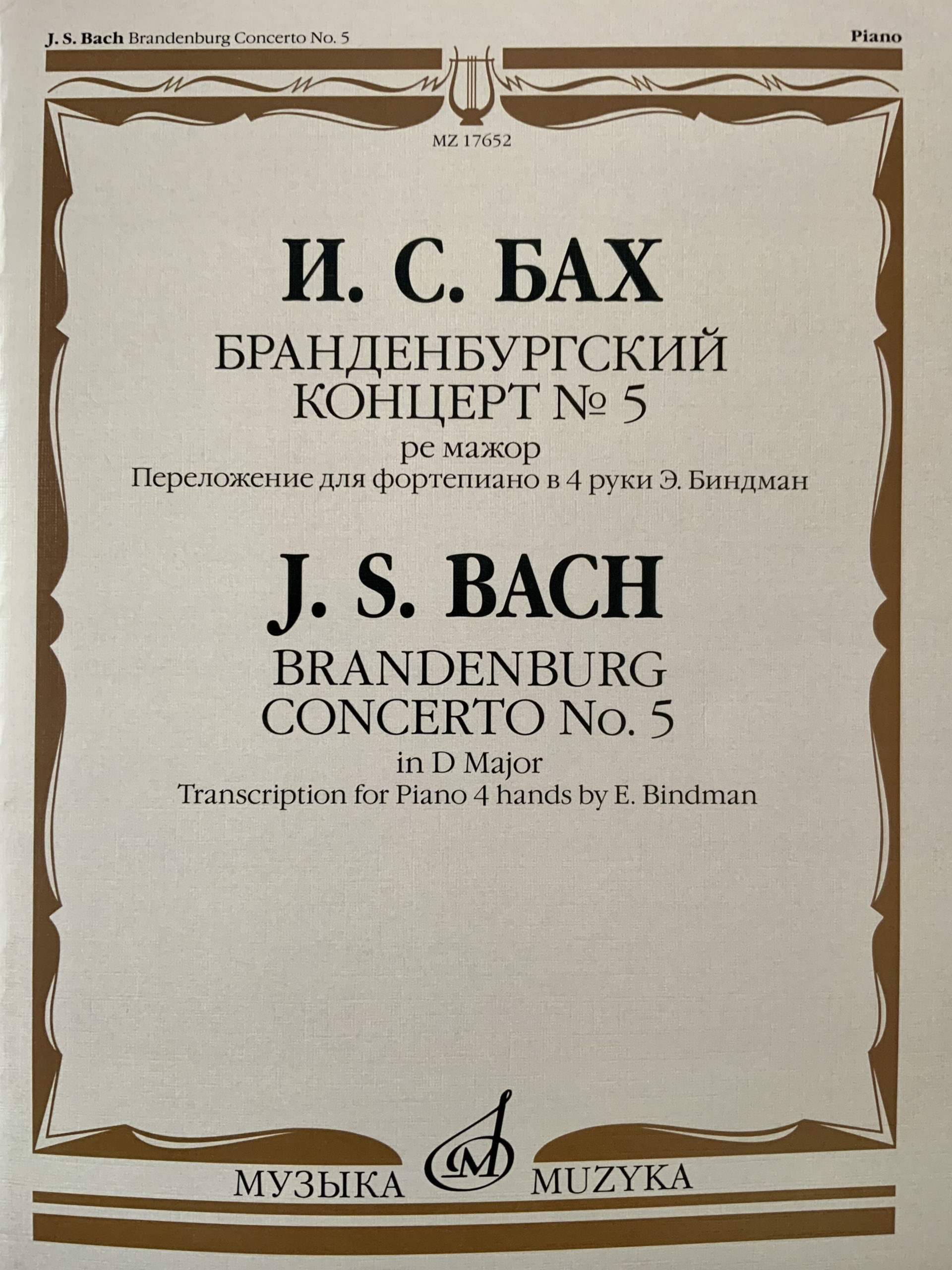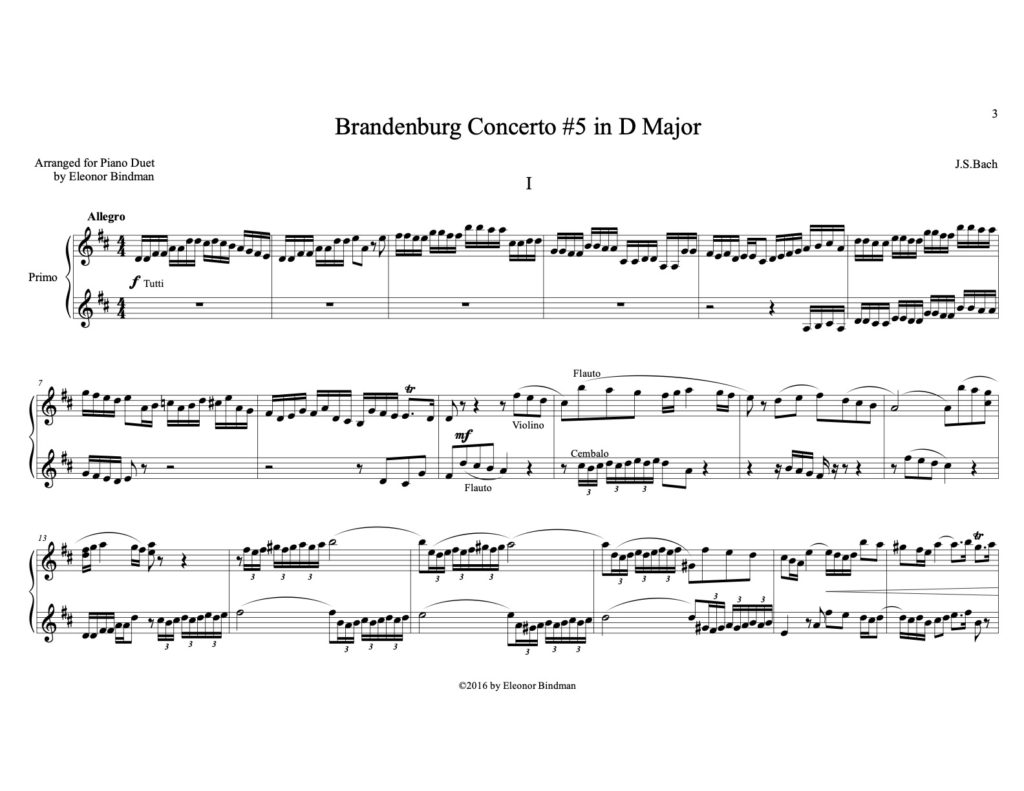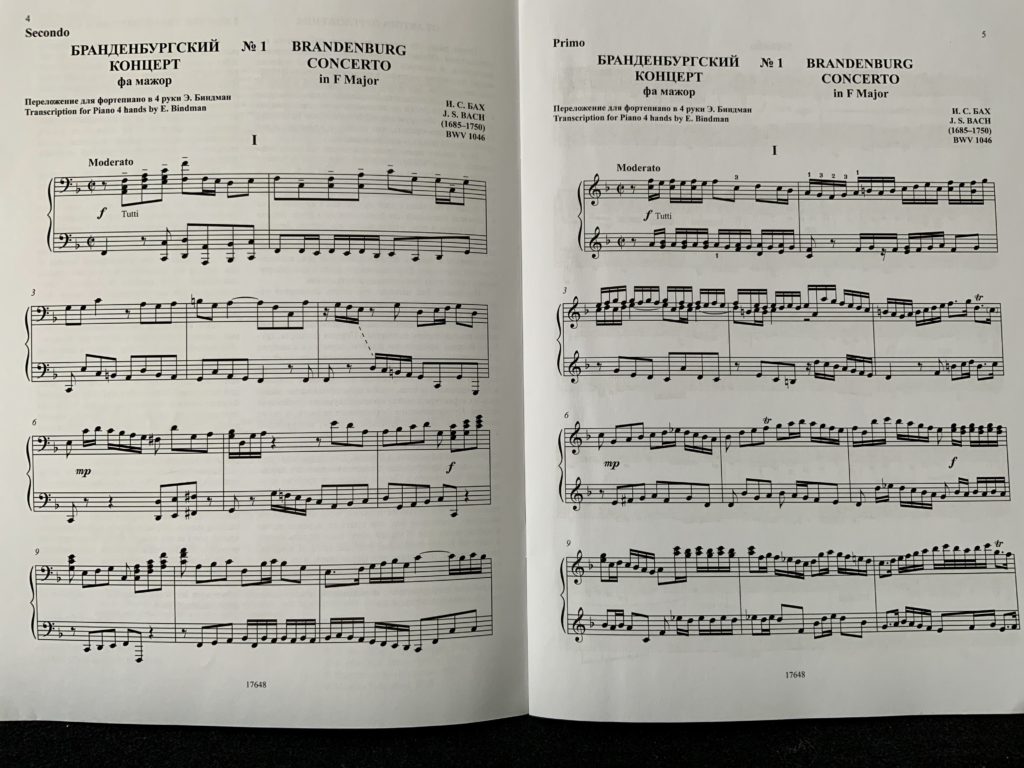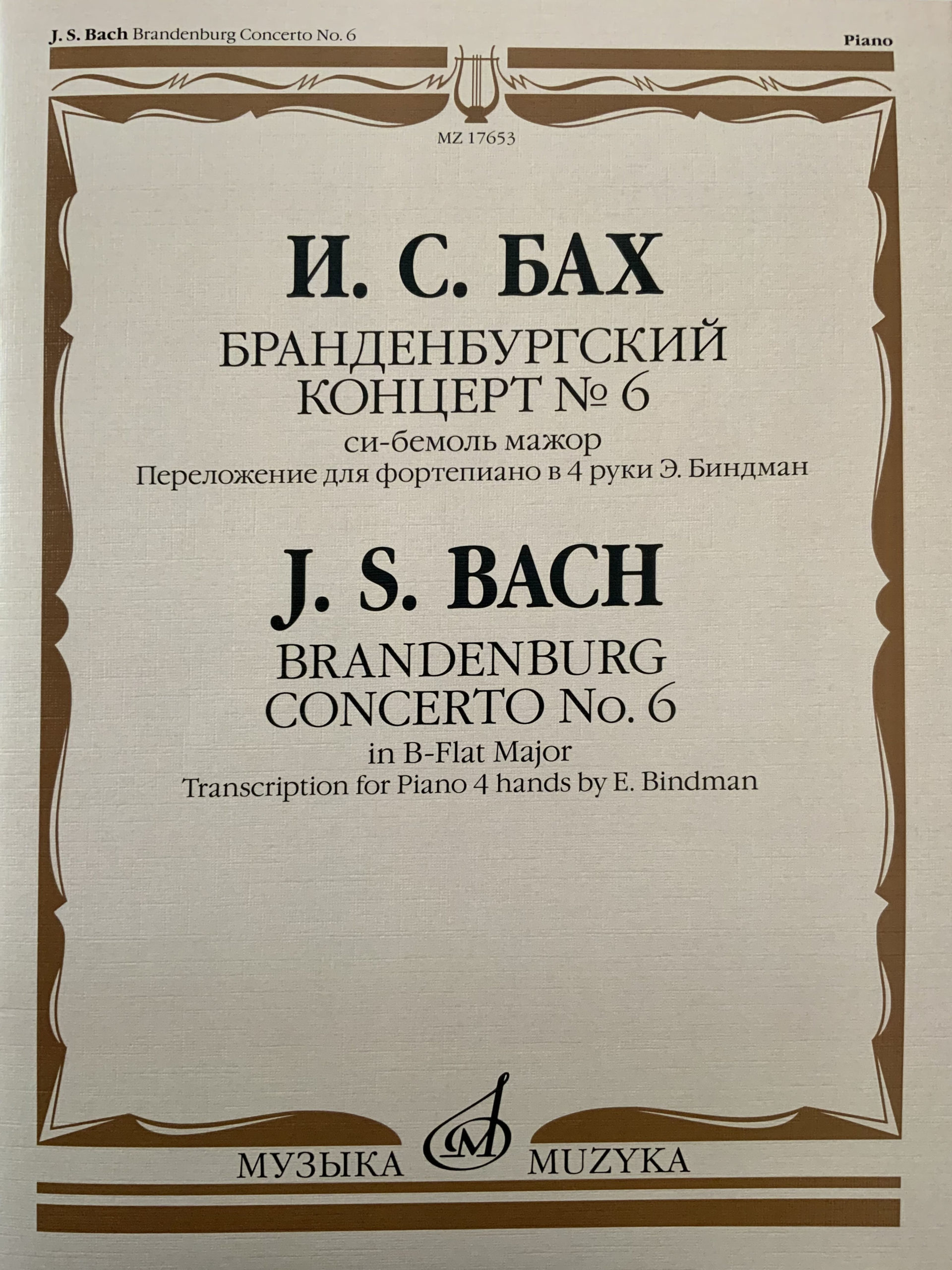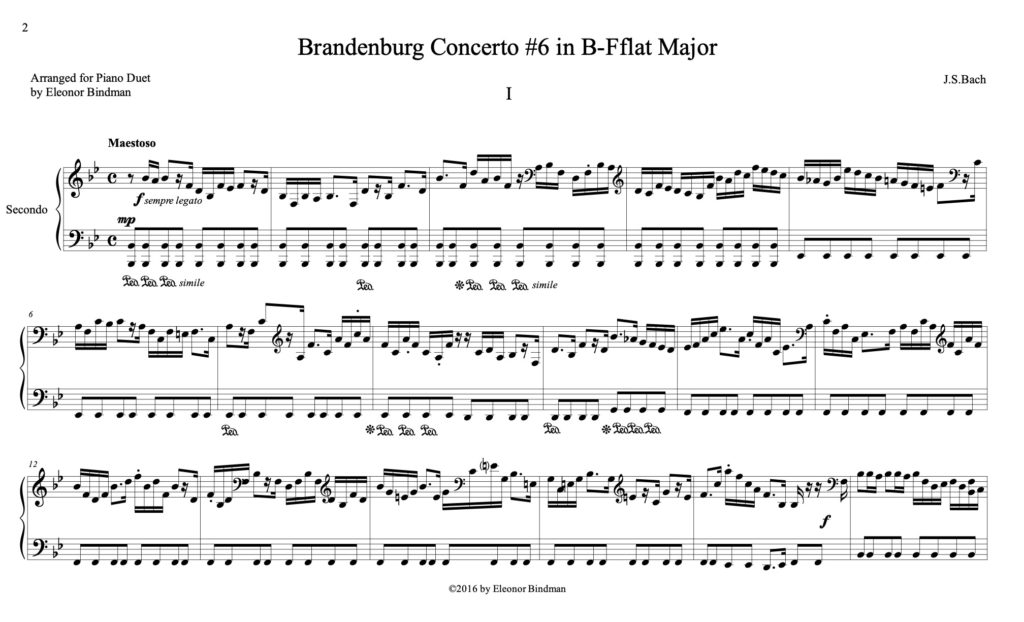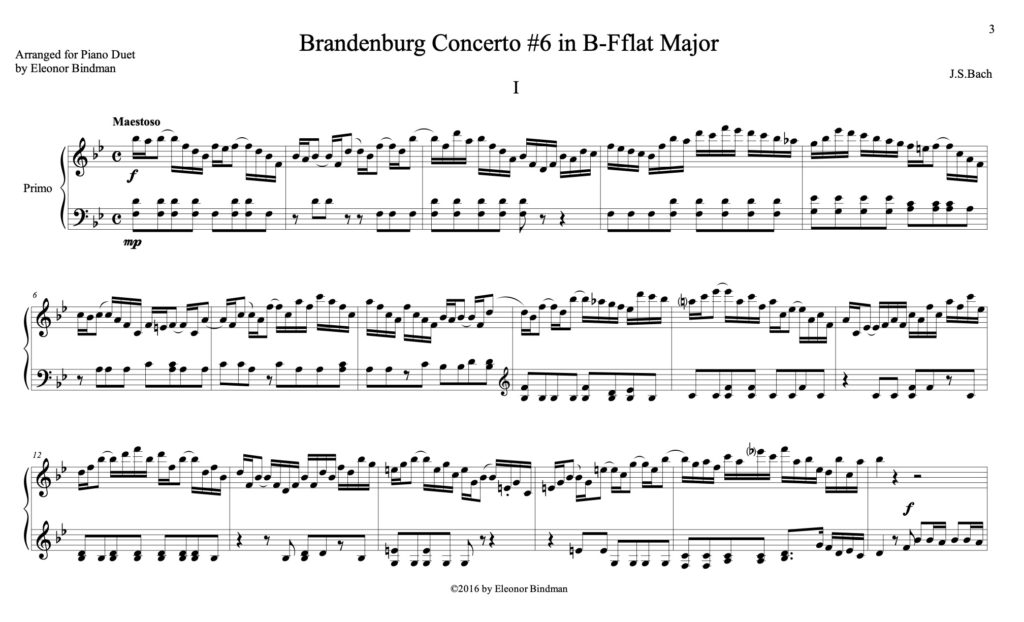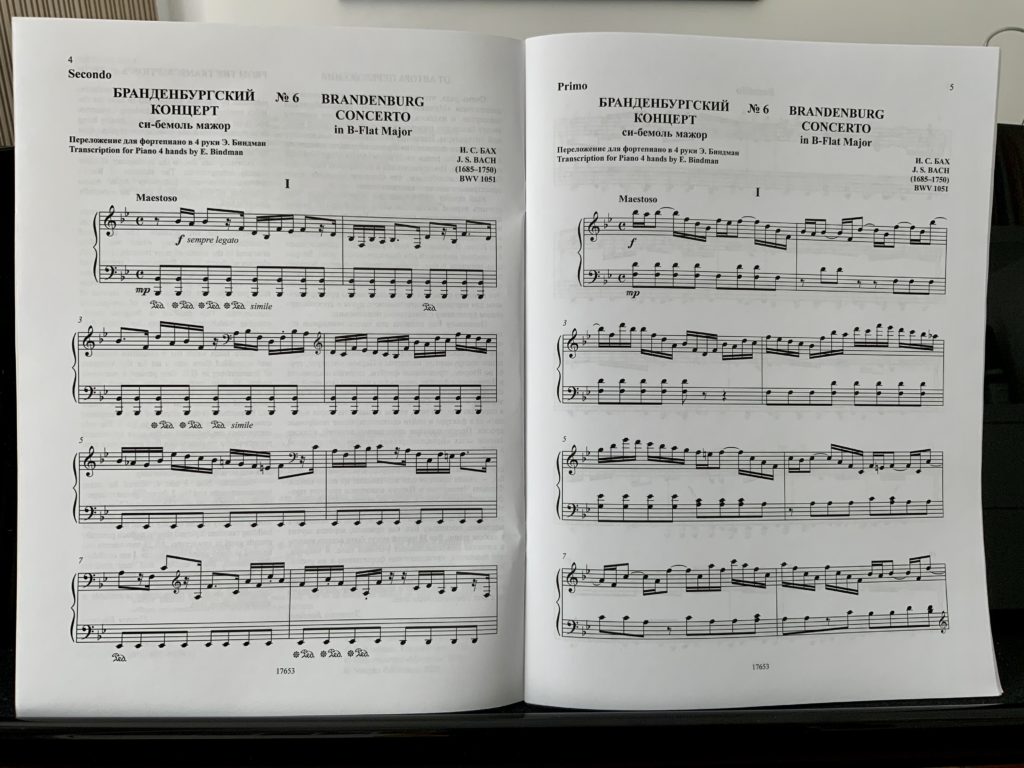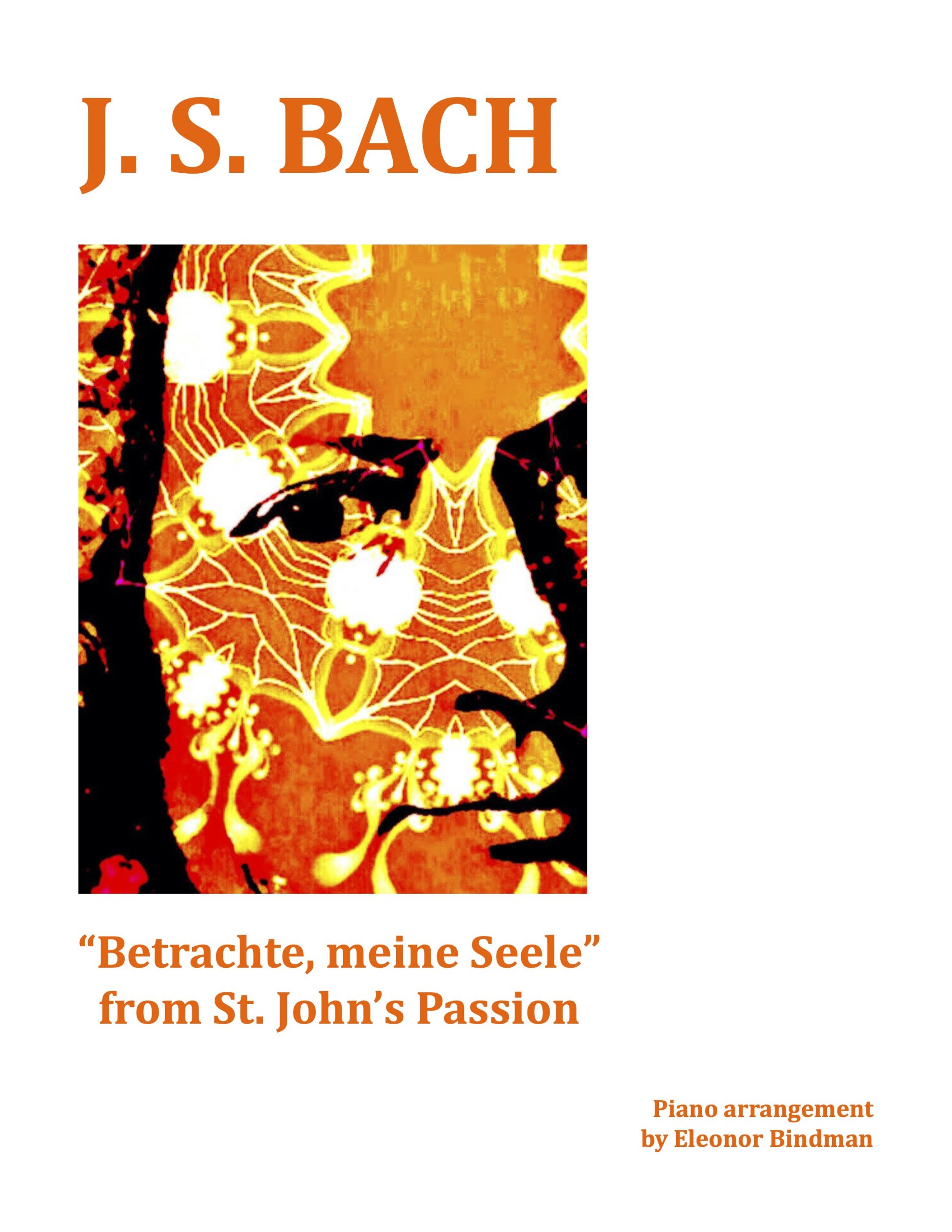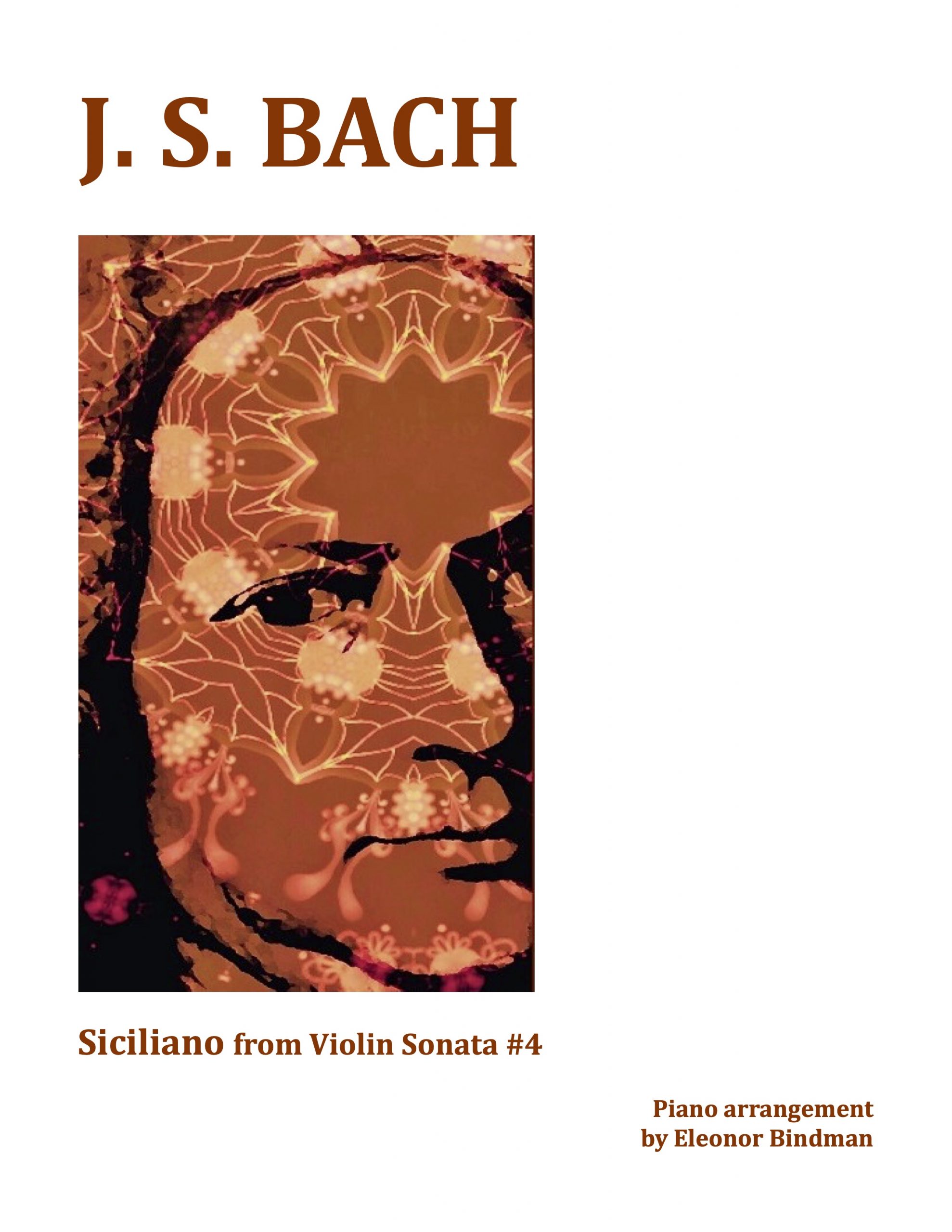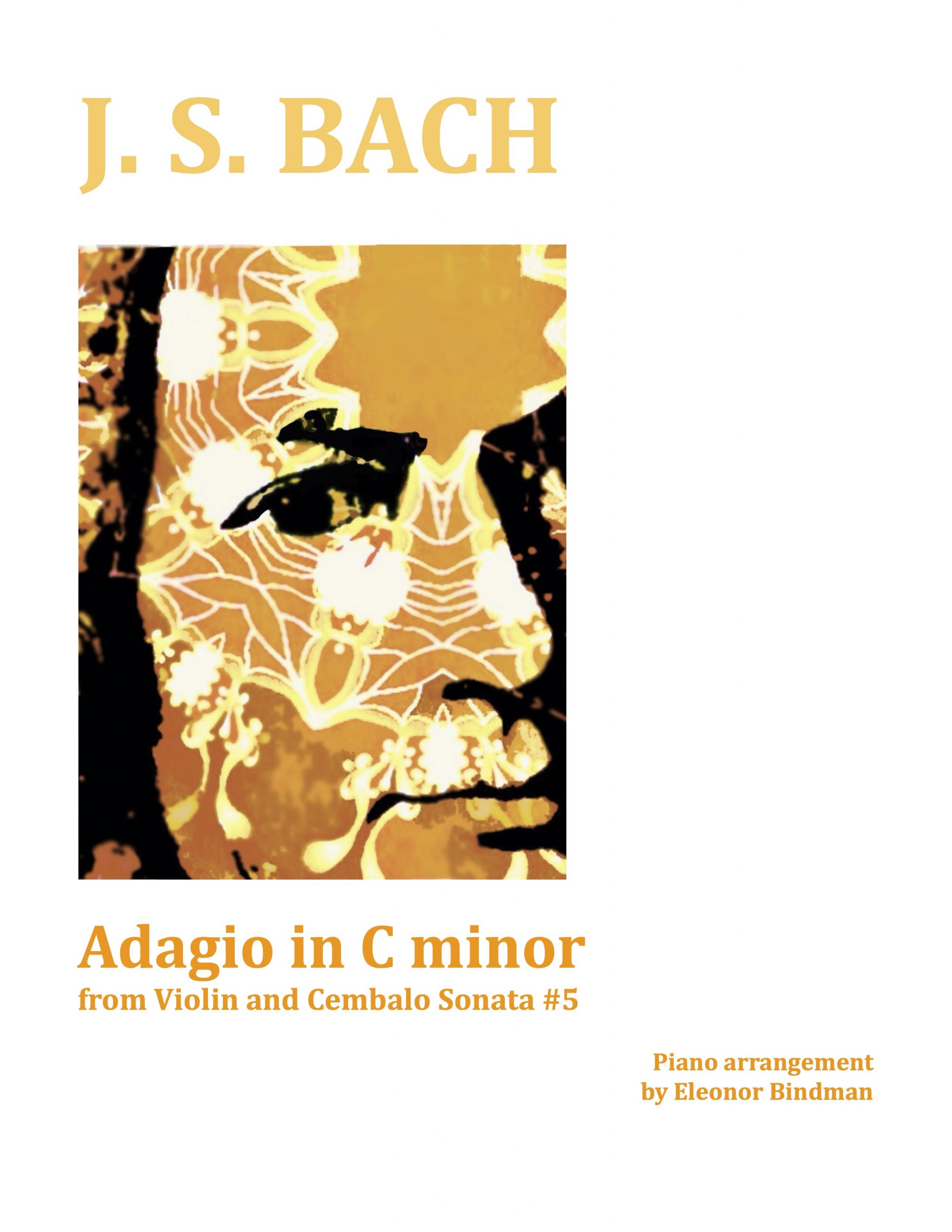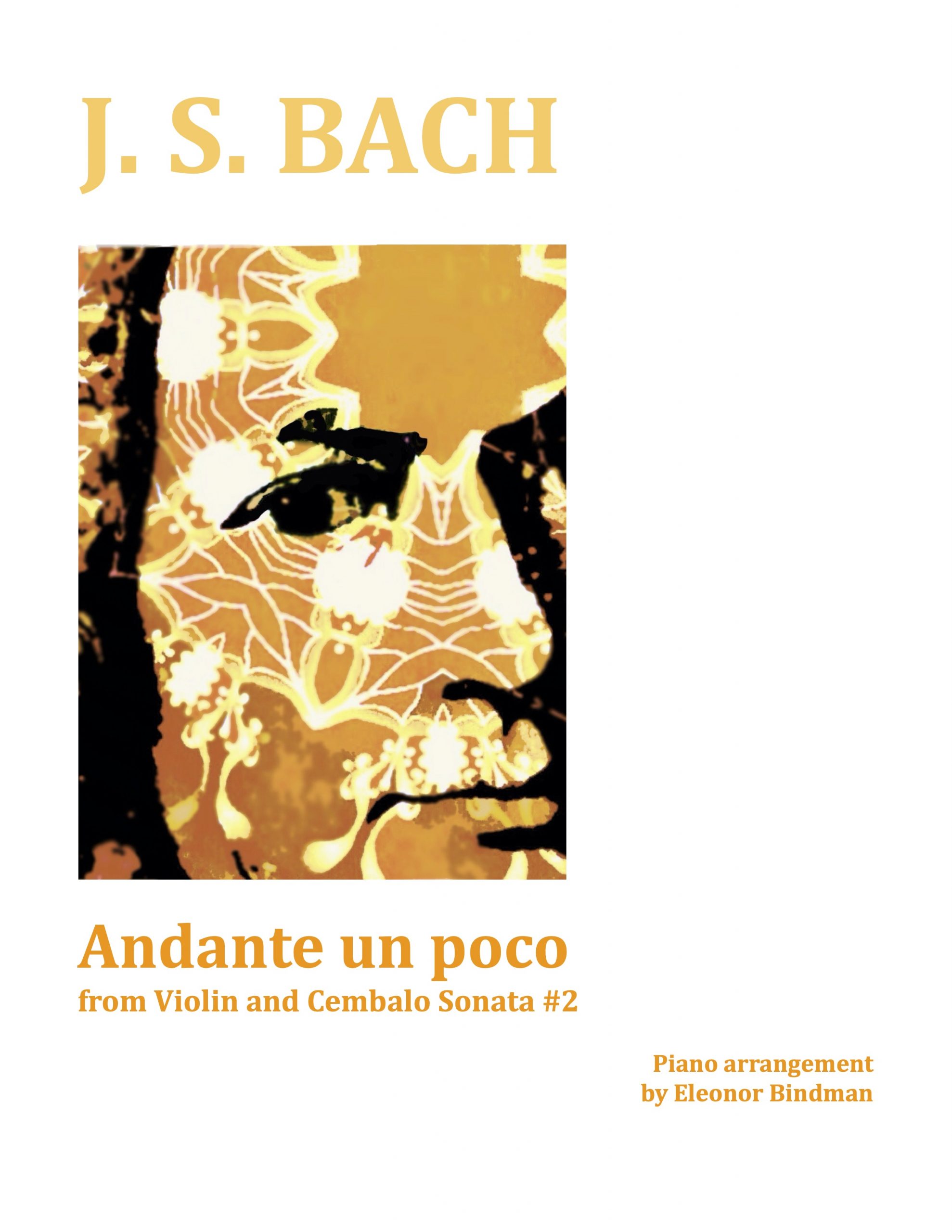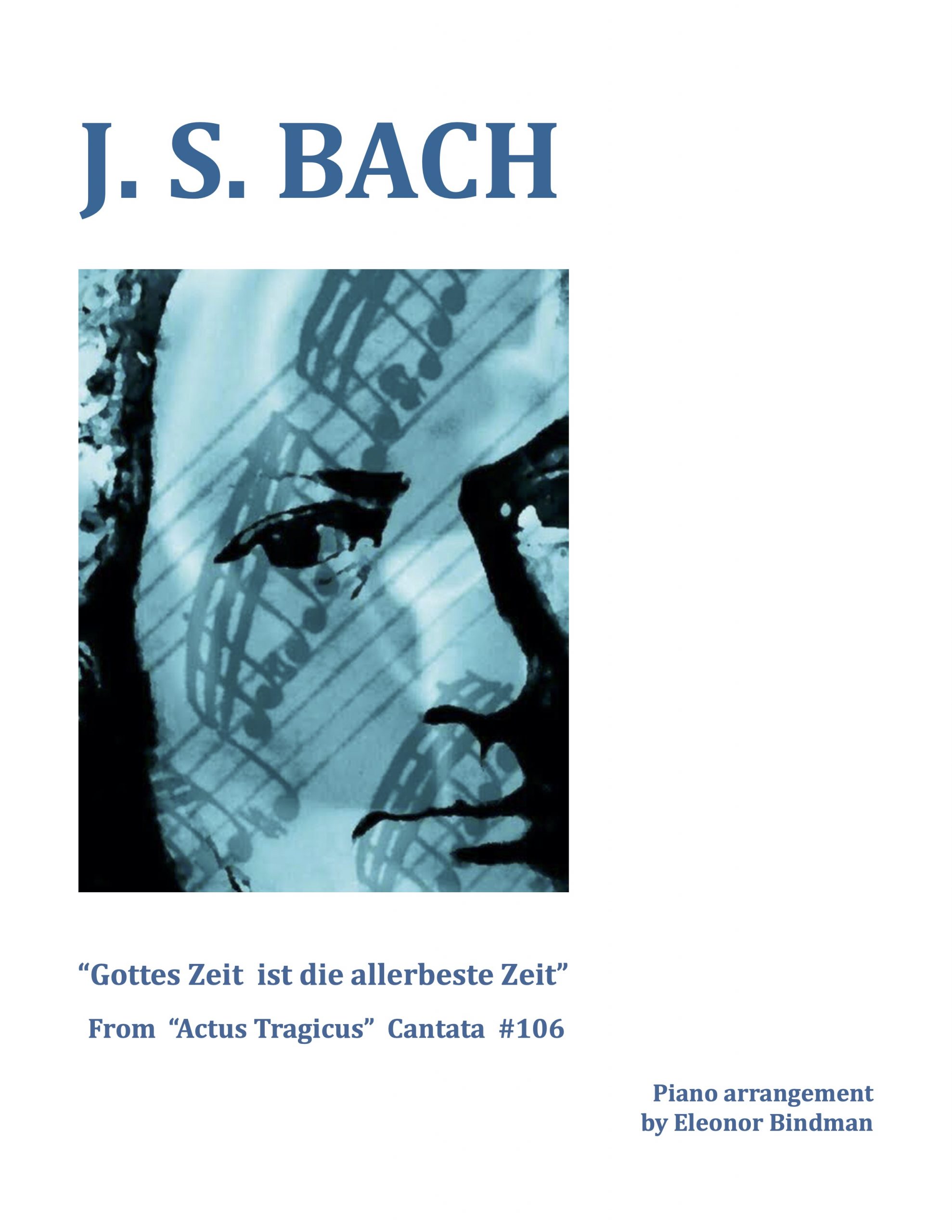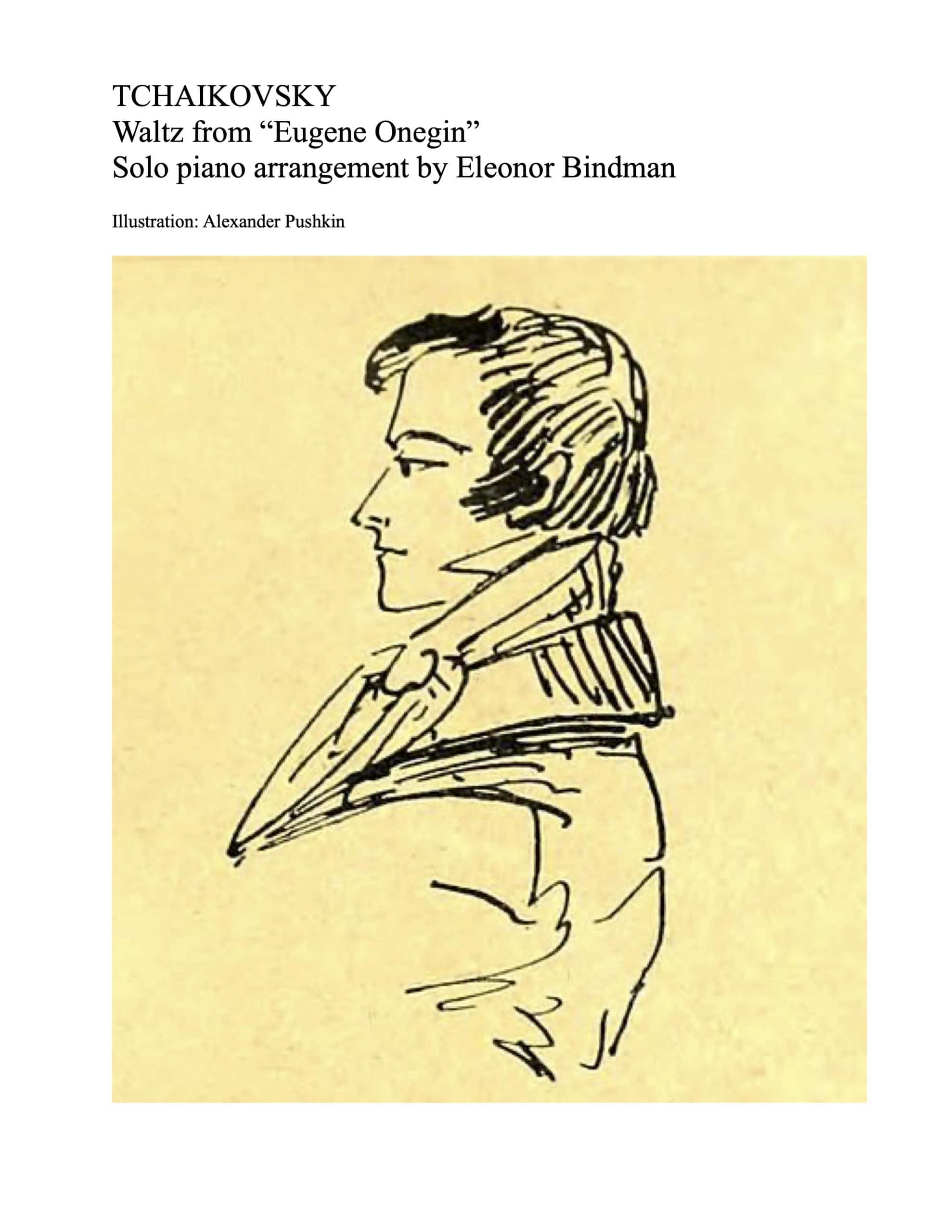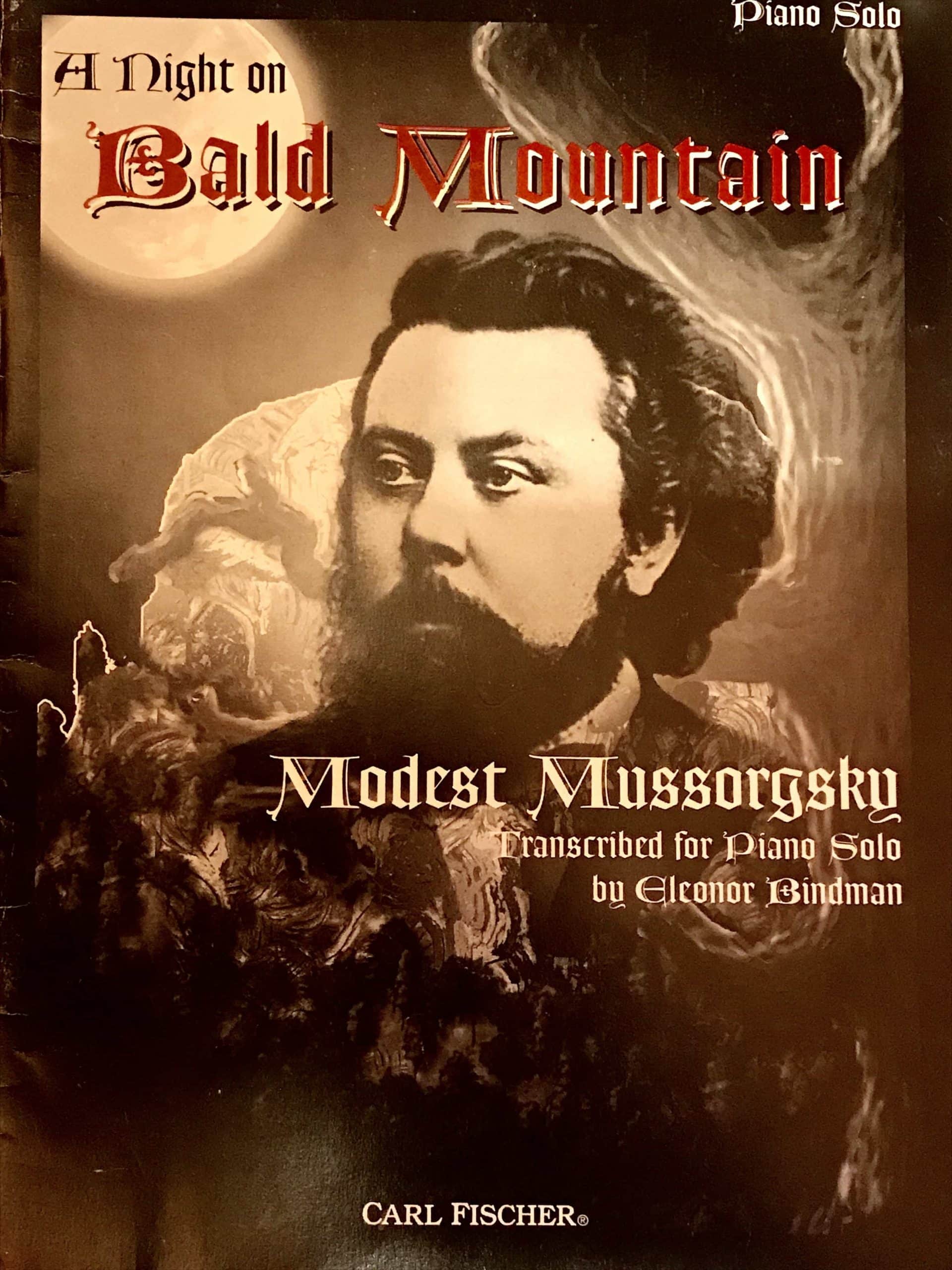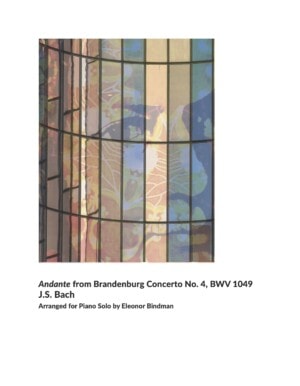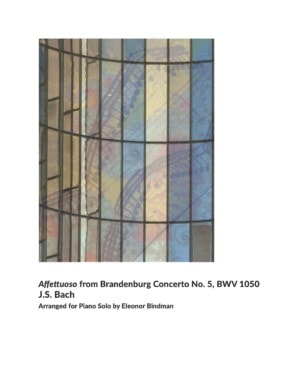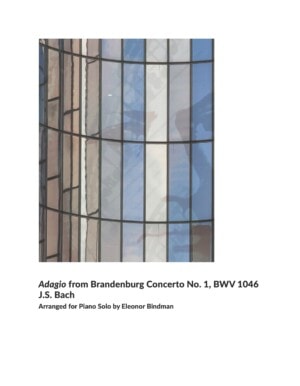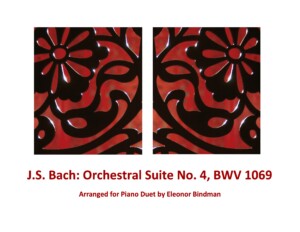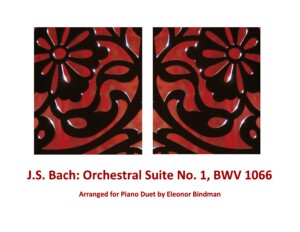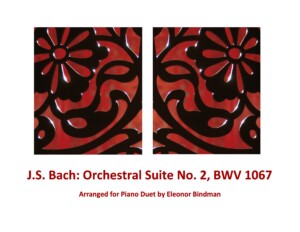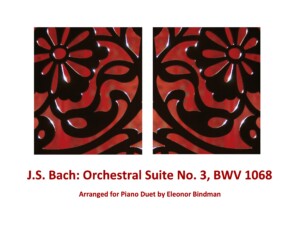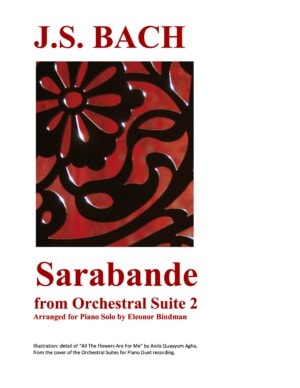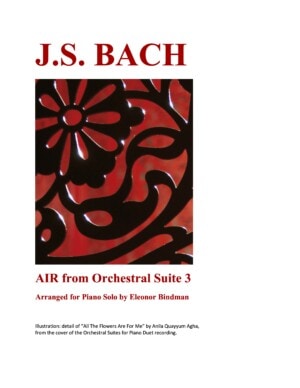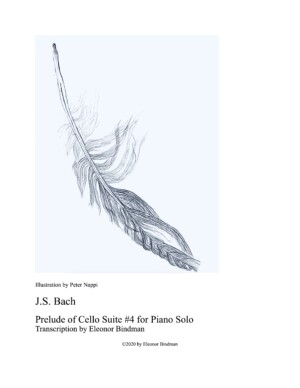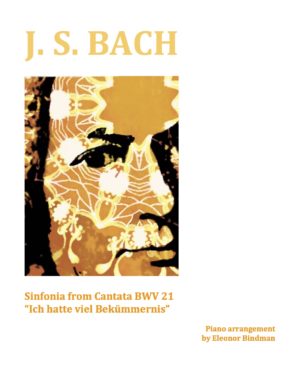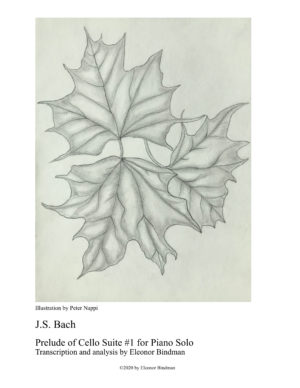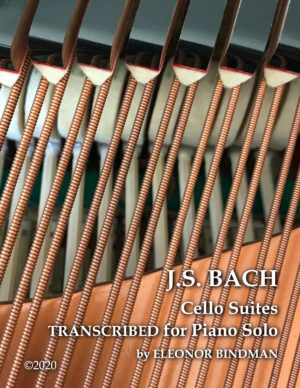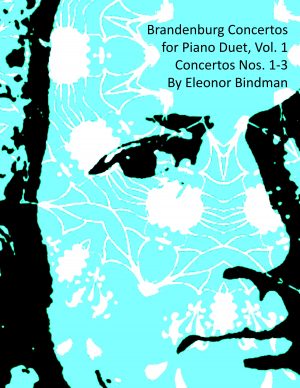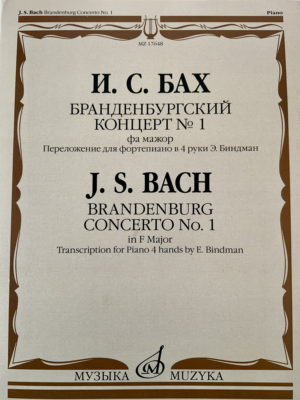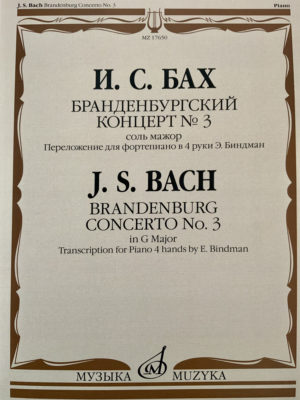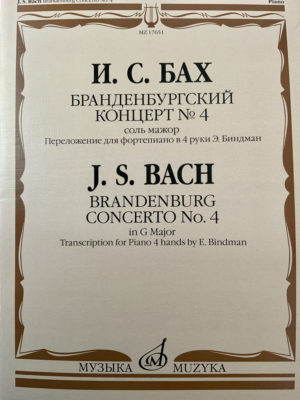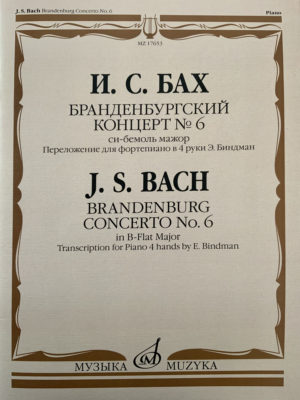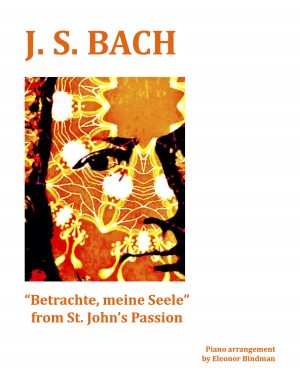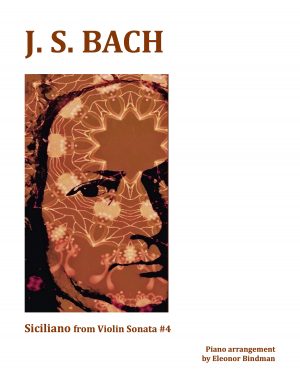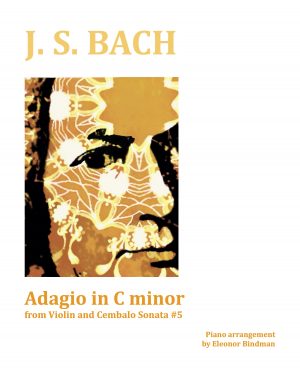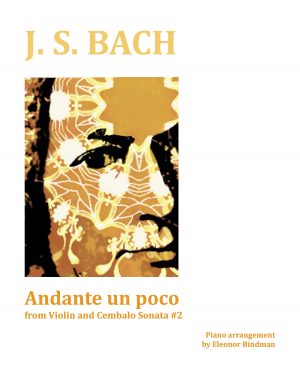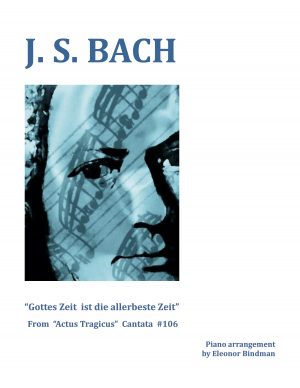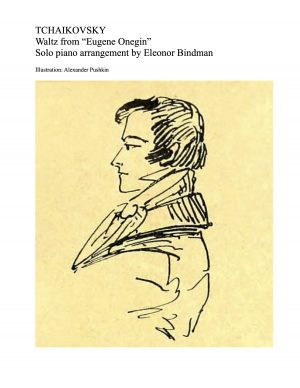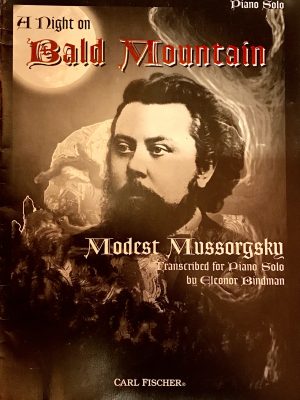J.S. Bach Lute Suites BWV 996-998
Transcriptions can revive interest in original compositions, and I am hoping that a piano version of Bach’s Suites BWV 996, 997, and 998 will increase their popularity. There is no consensus as to exactly what instrument each suite was designated for, but the choices narrow down to either the lute or the lute-harpsichord, an instrument then known as “lautenwerk.” Existing autographs and manuscripts are mostly in staff notation with a few lute tablatures since only professional lute players could produce those. Recorded versions are usually titled “lute suites” and performed either by guitarists, lutenists, or harpsichordists. Just like Bach’s other solo collections, these suites present a technical and musical tour de force for their performers and deserve their rightful place alongside Bach’s suites for keyboard, violin, and cello.
Details
- Page total: 64 pages
- Hard Copy Printed Orders: Printed on-demand and bound, Premium 28 lb paper, with commentaries.
- Hard Copies also include download access
- For those printing after purchasing downloads: double-sided printing has been considered in the file layout, so you are welcome to do so!
J.S. Bach: Orchestral Suites (Complete), BWV 1066-1069 Arranged for Piano Duet
“If I were half of a piano duo, I would want to play these transcriptions… They retain many of the qualities of Bach’s originals—the grandeur, the balanced grace, the songfulness, and the zest… I appreciate the textural and tonal variety of Bindman’s transcriptions, mirroring Bach’s originals without forgetting that idiomatic writing for two pianos and idiomatic orchestral writing are different.…” —Fanfare
The new arrangement of Bach’s complete Orchestral Suites for piano duet follows the best-selling Brandenburg Duets. These 4 sets of lively dances are excellent piano ensemble teaching and recital pieces, suitable for intermediate and advanced pianists of all ages.
Details
- Page total: 176 pages
- Hard Copy Printed Orders: Printed on-demand and bound, Premium 28 lb paper, with commentaries for each suite.
- Hard Copies also include download access
- For those printing after purchasing downloads: double-sided printing has been considered in the file layout, so you are welcome to do so!
Andante from Brandenburg Concerto No. 4, BWV 1049 for Solo Piano
Downloadable Score
While transcribing the complete Brandenburg Duets for piano duet, I realized that some of the slow movements could work really well for solo piano. Not having been familiar with them previously, I was enchanted by their lyricism. The Andante from the 4th concerto was the first one I transcribed for solo piano because, as with all of my transcriptions, I wanted to be able to play it myself.
This movement is built on echoes between the orchestra (tutti) and the soloists which easily translate onto the keyboard. Tutti passages are louder and lower in register than the solos. Some tutti phrases are luxuriously long and need to be pedaled carefully to help sustain the legato effect without muddling the harmony. Listening to an orchestral recording is the best reference as it will clearly delineate the different parts in your mind.
For inspiration and reference, it’s always useful to listen to recordings: there are plenty of orchestral ones out there and my piano duet version of is also available.
Affetuoso from Brandenburg Concerto No. 5, BWV 1050 for Solo Piano
Downloadable Score
While transcribing the complete Brandenburg Concertos for piano duet, I realized that some of the slow movements could work really well for solo piano. The Affettuoso from the ever-popular fifth concerto is one of them, scored as a trio for flute and violin soloists with harpsichord accompaniment. Since the release of the Brandenburg Duets recordings, it has become one of the most widely streamed tracks, along with the Adagio from Concerto No. 1. As implied by the title, it should be played “with feeling, in a tender, loving way.” At least that’s how the term is defined in dictionaries. What kind of an emotion should we try to convey here?
For inspiration and reference, it’s always useful to listen to recordings: there are plenty of orchestral ones out there and my piano duet version of is also available.
Adagio from Brandenburg Concerto No. 1, BWV 1046 for Solo Piano
Downloadable Score
I was completely unfamiliar with this gorgeous Adagio before undertaking the Brandenburg Duets transcription project and really hope that now it will gain more appreciation in a solo piano transcription. It has become my absolutely favorite solo Bach arrangement to play. The theme, structured upon descending melismatic patterns, sounds very exotic, somewhat Arabic and mesmerizing. Imagining the first 3 measures of the melody coming out of a snake charmer’s flute doesn’t seem far-fetched at all. The atmospheric accompaniment of “cushions” of chords helps establish the mood and sounds good even at a very slow tempo.
For inspiration and reference, it’s always useful to listen to recordings: there are plenty of orchestral ones out there and my piano duet version of is also available.
J.S. Bach: Orchestral Suite No. 4, BWV 1069 Arranged for Piano Duet
“If I were half of a piano duo, I would want to play these transcriptions… They retain many of the qualities of Bach’s originals—the grandeur, the balanced grace, the songfulness, and the zest… I appreciate the textural and tonal variety of Bindman’s transcriptions, mirroring Bach’s originals without forgetting that idiomatic writing for two pianos and idiomatic orchestral writing are different.…” —Fanfare
The new arrangement of Bach’s complete Orchestral Suites for piano duet follows the best-selling Brandenburg Duets. This set of the Fourth Suite of lively dances are excellent piano ensemble teaching and recital pieces, suitable for intermediate and advanced pianists of all ages.
Details
- Downloadable Score
- Hard Copy Printed Orders: Printed on-demand and bound, Premium 28 lb paper, with commentaries for each suite.
- Hard Copies also include download access
- For those printing after purchasing downloads: double-sided printing has been considered in the file layout, so you are welcome to do so!
J.S. Bach: Orchestral Suite No. 1, BWV 1066 Arranged for Piano Duet
“If I were half of a piano duo, I would want to play these transcriptions… They retain many of the qualities of Bach’s originals—the grandeur, the balanced grace, the songfulness, and the zest… I appreciate the textural and tonal variety of Bindman’s transcriptions, mirroring Bach’s originals without forgetting that idiomatic writing for two pianos and idiomatic orchestral writing are different.…” —Fanfare
The new arrangement of Bach’s complete Orchestral Suites for piano duet follows the best-selling Brandenburg Duets. This set of the First Suite of lively dances are excellent piano ensemble teaching and recital pieces, suitable for intermediate and advanced pianists of all ages.
Details
- Downloadable Score
- Hard Copy Printed Orders: Printed on-demand and bound, Premium 28 lb paper, with commentaries for each suite.
- Hard Copies also include download access
- For those printing after purchasing downloads: double-sided printing has been considered in the file layout, so you are welcome to do so!
J.S. Bach: Orchestral Suite No. 2, BWV 1067 Arranged for Piano Duet
“If I were half of a piano duo, I would want to play these transcriptions… They retain many of the qualities of Bach’s originals—the grandeur, the balanced grace, the songfulness, and the zest… I appreciate the textural and tonal variety of Bindman’s transcriptions, mirroring Bach’s originals without forgetting that idiomatic writing for two pianos and idiomatic orchestral writing are different.…” —Fanfare
The new arrangement of Bach’s complete Orchestral Suites for piano duet follows the best-selling Brandenburg Duets. This set of the Second Suite of lively dances are excellent piano ensemble teaching and recital pieces, suitable for intermediate and advanced pianists of all ages.
Details
- Downloadable Score
- Hard Copy Printed Orders: Printed on-demand and bound, Premium 28 lb paper, with commentaries for each suite.
- Hard Copies also include download access
- For those printing after purchasing downloads: double-sided printing has been considered in the file layout, so you are welcome to do so!
J.S. Bach: Orchestral Suite No. 3, BWV 1068 Arranged for Piano Duet
“If I were half of a piano duo, I would want to play these transcriptions… They retain many of the qualities of Bach’s originals—the grandeur, the balanced grace, the songfulness, and the zest… I appreciate the textural and tonal variety of Bindman’s transcriptions, mirroring Bach’s originals without forgetting that idiomatic writing for two pianos and idiomatic orchestral writing are different.…” —Fanfare
The new arrangement of Bach’s complete Orchestral Suites for piano duet follows the best-selling Brandenburg Duets. This set of the Third Suite of lively dances are excellent piano ensemble teaching and recital pieces, suitable for intermediate and advanced pianists of all ages.
Details
- Downloadable Score
- Hard Copy Printed Orders: Printed on-demand and bound, Premium 28 lb paper, with commentaries for each suite.
- Hard Copies also include download access
- For those printing after purchasing downloads: double-sided printing has been considered in the file layout, so you are welcome to do so!
J.S. Bach: Sarabande for Orchestral Suite 2
Downloadable Score
The inner voices are shared between the hands depending on which one can reach the notes. For comfortable execution of this type of legato counterpoint, your wrists and elbows need to be relaxed. Then the hands will adopt appropriate hand positions – usually with the wrist raised – for pivoting on the thumb in m. 21 or playing parallel thirds in m. 27, for instance. *Upper LH voice in mm. 18-19 and 25-26 can be omitted.
For inspiration and reference, it’s always useful to listen to recordings: there are plenty of orchestral ones out there and my piano duet version of is also available, released on Grand Piano records in November 2022.
J.S. Bach: Air from Orchestral Suite 3
Downloadable Score
Making a solo piano version of the Air from Orchestral Suite No. 3 didn’t occur to me at first. The extreme popularity of this movement, usually referred to as “Air On G String,” implies many existing arrangements, as befits one of “Bach’s Greatest Hits.” Even while working on the piano-4-hands arrangement of the complete Orchestral Suites, I had mixed feelings about the somewhat hackneyed high-pitched theme and couldn’t imagine performing it convincingly, especially with repeats. A solution had to be found and, after creating several piano duet versions, I settled on one where the melody is first introduced an octave lower and then played again in the original register. The adjustment made the higher – octave iteration sound fresh and much more welcome to my ears.
Curious about the reason for the added “G String” in the title, I read about a German violinist named August Wilhelmj who also transposed the melody an octave lower in 1871, so that it could be played on just the lowest string on the violin, the G string. Wikipedia doesn’t explain whether Wilhelmj wanted to use one string as a matter of principle or, perhaps, preferred the sound of the lower register. Either way, I was happy to discover I was not alone. After rehearsing, recording and listening to the resulting piano-4-hands version, I grew to like it and decided to proceed with a solo piano version after all, so here it is.
I include 2 versions of the transcription: with and without fingerings. As in most of my arrangements, the inner voices are shared between the hands depending on which one can reach the notes. I try to indicate my preferred rendition with brackets and fingerings but you can find your own solutions – see mm. 23-24 for instance. Do use the pedal to sustain notes in upper and lower voices when the hands are needed to fill in the middle. For comfortable execution of this type of legato counterpoint, your wrists and elbows need to be relaxed. Then the hands will easily assume comfortable positions – usually with the wrist raised – for accommodating two lines with one hand. For example, beat 1 of the left hand in m. 6 becomes easy if you use the pedal and keep the wrist relaxed and quite high. The tempo can be stretched a bit and is fairly slow to begin with, so the score isn’t as intimidating in practice as it may look upon first glance. For inspiration and reference, it’s always useful to listen to recordings: there are plenty of orchestral ones out there and my piano duet version of is also available, released on Grand Piano records in November 2022.
J.S. Bach: Prelude from Cello Suite No. 4
Downloadable Score
Bach’s Prelude from Cello Suite No. 4 transcribed for solo piano from Eleonor Bindman’s new transcription of J.S. Bach Cello Suites for Piano Solo Score!
The Prelude of Suite 4 sounds almost “Romantic” on the piano and is best described by a somewhat overused adjective “beautiful.” What exactly makes it so? Hard to explain, but these arpeggios descending from far above, often traversing 2 octaves, feel like a gentle stream of kindness, of heavenly grace enveloping us all. The 16-note episodes are clouds passing through, only to return us back to equilibrium. This Prelude perfectly illustrates an important “trade secret” of J. S. Bach: starting a pattern on the second note of a measure, instead of on the first one. This compositional device, whether used intentionally or not, is the key to that singular “endless” quality of much of his music, shifting the emphasis from the downbeats of each measure.
The inner patterns of the arpeggios contain rich layers of implied polyphony and this Prelude works in a wide range of tempi (I currently prefer mm 52-54 per half note). Starting at measure 49 and through the end, I would suggest following the directional and harmonic implications of the 16th-note fragments without feeling constrained by diligent counting. And by all means, use that damper pedal for the arpeggios, your foot will land there before you even know it.
“Ich hatte viel Bekümmernis” from Cantata BWV 21
Downloadable Score
A new J.S. Bach piano transcription from one of Bach’s early Cantatas (BWV 21). It’s impossible to speed through this one because of the intricate figurations involving many 32nd notes. I love the feeling it gives me when I play it.
J.S. Bach: Prelude from Cello Suite No. 1
Downloadable Score
Bach’s Prelude from Cello Suite No. 1 transcribed for solo piano from Eleonor Bindman’s new transcription of J.S. Bach’s Complete Cello SuitesJ.S. Bach Cello Suites for Piano Solo Score!
Suite No. 1 is well-grounded in the key of G major, starting with an open tonic chord of G, the D a fifth above and a B a 10th above. Bach unifies this Suite by planting this chord, a compositional seed of sorts, in each of the six movements and continues to use a similar common feature in Suites 2 and 3. The calm and beneficent quality of G major coupled with the “seminal” approach created in me a strong association with growth, nature as a source and healer of all things, and the color green.
J.S. Bach Cello Suites for Piano Solo Score
Details
- Page total: 124 pages
- Hard Copy Printed Orders: Printed on-demand and bound: 124 pages, Premium 28 lb paper, with commentaries and illustrations for each suite.
- Hard Copies also include download access
- For those printing after purchasing downloads: double-sided printing has been considered in the file layout, so you are welcome to do so!
The Cello Suites are the essence of Bach, a meditation which mysteriously connects us to ourselves and to the universe at once. My new transcription of this beloved set shows a refreshing perspective to a pianist, unencumbered by counterpoint and zooming in on the individual line, patterns, tone quality, and the great composer’s vocabulary. I find the experience of playing the Suites on the keyboard not only aesthetically satisfying but also relaxing and joyful. We could all use an opportunity to enjoy our music-making without unnecessary stress, especially in current times. I am also eager to bring these 36 pieces to many pianists and students because they are immensely beneficial for working on tone and finger technique.
Stepping Stones to Bach
Details
-
- Page total: 32 pages
- Hard Copy Printed Orders: Printed on-demand and bound on Premium 28 lb paper
- For those printing after purchasing downloads: double-sided printing has been considered in the file layout, so you are welcome to do so.
Stepping Stones to Bach was created to connect amateur pianists and students to the orchestral, choral and various instrumental masterpieces of J.S. Bach. These 48 arrangements make excellent recital pieces, technique studies, warm-up and sight-reading exercises, and building blocks for learning more difficult works. I grouped them into 2 sets of 24 selections as a tribute to The Well-Tempered Clavier.
Pianists of all ages can enjoy playing Bach’s music from this volume without having to spend months perfecting a single piece. Themes from various iconic compositions such as the Brandenburg concertos are adapted to the easy/intermediate piano level, with the melodic and harmonic essentials left intact. Closing cadences are added at suitable points, resulting in a manageable and satisfying playing experience.
I recommend streaming my Stepping Stones to Bach playlist, a supplement to this volume, on Spotify or Apple Music. It will be especially useful for younger students, for stylistic reference and fostering the habit of listening to classical music.
J.S. Bach: Brandenburg Concertos for Piano Duet, Vol. 1 (Concertos 1–3)
J.S. Bach’s Brandenburg Concertos arranged for Piano Duet by Eleonor Bindman — Volume One: Concertos Nos. 1-3:
J.S. Bach: Brandenburg Concertos for Piano Duet, Vol. 2 (Concertos 4–6)
J.S. Bach’s Brandenburg Concertos arranged for Piano Duet by Eleonor Bindman — Volume Two: Concertos Nos. 4-6:
J.S. Bach: Brandenburg Concerto No. 1 for Piano Duet
J.S. Bach’s Brandenburg Concerto No. 1 in F Major, BWV 1046 arranged for Piano Duet by Eleonor Bindman.
J.S. Bach: Brandenburg Concerto No. 2 for Piano Duet
J.S. Bach’s Brandenburg Concerto No. 2 in F Major, BWV 1047 arranged for Piano Duet by Eleonor Bindman.
J.S. Bach: Brandenburg Concerto No. 3 for Piano Duet
J.S. Bach’s Brandenburg Concerto No. 3 in G Major, BWV 1048 arranged for Piano Duet by Eleonor Bindman. Designed to be enjoyed by intermediate and advanced pianists and students.
J.S. Bach: Brandenburg Concerto No. 4 for Piano Duet
J.S. Bach’s Brandenburg Concerto No. 4 in G Major, BWV 1049 arranged for Piano Duet by Eleonor Bindman.
J.S. Bach: Brandenburg Concerto No. 5 for Piano Duet
J.S. Bach’s Brandenburg Concerto No. 5 in D Major, BWV 1050 arranged for Piano Duet by Eleonor Bindman.
J.S. Bach: Brandenburg Concerto No. 6 for Piano Duet
J.S. Bach’s Brandenburg Concerto No. 6 in B-flat Major, BWV 1051 arranged for Piano Duet by Eleonor Bindman.
J.S. Bach: “Betrachte, meine Seele”
Downloadable Score
This wonderful bass aria from “St. John’s Passion” is scored for low strings, lute and organ continuo and the proximity of the instrumental registers made it very challenging to adapt for the piano. The result seems “pianistic” enough yet not “baroque,” because Bach’s harmonic lute accompaniment gains a luxurious “romantic” feel on the piano. Since the aria is very short, I took the liberty of repeating it in a higher register, as any pianist would naturally prefer to have the melody in the right hand, with left-hand accompaniment. I am grateful to Stuart Arlott for suggesting this gem as a possible arrangement and would like to dedicate this piano version to his son Jules.
The melody here is notated (for convenience and continuity) as an upper voice of the left hand, but in practice, it’s almost equally shared with the right hand. When reading through the transcription, it should become clear which melody notes are within reach of either hand. Some repeated bass notes are put in parentheses if they involve stretching wider than an octave and they may be skipped. The slow tempo should help you navigate this dense texture and careful pedaling will take care of executing the melody with an expressive legato cantabile.
J.S. Bach: Rondeau from Orchestral Suite #2 in B minor
Downloadable Score
Any orchestral tempo of this delightful Rondeau will appropriately be much faster than the Allegretto I assigned. For a pianist, series of eighth-note 3rds and 6ths which are found in abundance in this transcription are much trickier than they look. Measures 29-35, for instance, are quite dense and rushing them would be a natural tendency, so please remember to slow down and enjoy the music. This is a graceful and somewhat “mannered” piece, as indicated by the “Mannheim Sigh” which dominates the theme.
I indicated slurs where I think they’re absolutely necessary – as in the “sighs” mentioned above – but most other eight notes can be played legato as well and the touch can be changed according to your preference or, when the theme repeats, for variety.
I also took care in designating quite a few dynamics and expression marks here, to preserve the Rondeau’s playful character. The short crescendos leading up to a new dynamic level were added more as an opportunity for the lower voices to be expressive than a stylistic deviation from the Baroque norm of terraced dynamics. We are playing the modern piano after all.
J.S. Bach: Siciliano from Violin Sonata No. 4 for Solo Piano
Downloadable Score
As with much of Bach’s instrumental output, while studying this arrangement the musician has license to be flexible. One may and should experiment with different tempi, articulation, pedaling, dynamics, touch and even phrasing. For those who feel they would benefit from some direction, here are a few guidelines:
Tempo: I would suggest a range from 72 to 92 metronome marking per 8th note.
Articulation: the left hand can be played either legato, non-legato or even staccato, if pedaled. The implied bass line, shown as the lowest note of beats 1 and 4, can be sustained, for more polyphonic effect, by either holding down the key or using the sostenuto pedal.
Phrasing: I left out most of the slurs because the melody here is continuous. As long as the right hand plays a smooth, cantabile legato and the tied notes are carefully listened to, it will work.
Pedal: this piece can sound fine without any pedal, especially at a faster tempo, but for those who hear it more slowly, some pedaling will help and enhance the sound. There is room for experimentation with all 3 pedals here and different approaches can also work for the repeats.
Dynamics: overall, this is not a loud piece, but of course there are moments of increased tension and resolution.
I hope that you will enjoy being able to play this wonderful piece without a violinist.
J.S. Bach: Adagio from Violin Sonata No. 5 for Solo Piano
Downloadable Score
This is an excerpt from J.S. Bach’s Sonata No. 5 for violin and keyboard. Why do I feel this Adagio is a good match for solo piano? As always when I choose to adapt something, I primarily do it because I think the music is exceptionally beautiful and I want to play it by myself, without having to put together my music stand and wait for a violinist to show up. I also try to make Bach transcriptions which foster piano technique skills – after all, Bach himself wrote dozens of shorter keyboard compositions for the same purpose. This Adagio revealed great potential as an exercise for the left hand and the entire left arm, hence the unusual layout: 1 staff on top for the right hand and 2 staves below for the left. The right hand sustains the harmonic intervals of the violin part while the left hand takes over the entire keyboard part of the juxtaposed groupings – melodic fragments on top and arpeggios at the bottom. The pianist gets to cultivate finger agility and a beautiful cantabile in the left hand and to keep crossing it over the right one – the necessarily slow tempo makes it easy to monitor the sound quality and the muscle relaxation.
J.S. Bach: Violin Sonata No. 2 – Andante un poco
Downloadable Score
Andante un poco, the 3rd movement of Violin Sonata No. 2, was transcribed in November 2017 after a violin and piano recital. This movement, in the poignant key of f# minor, is a continuous canon between the violin and piano over a lovely moving staccato bass. For a solo pianist in becomes a great exercise in voice-leading when both parts need to be played with the right hand.
J.S. Bach: Gottes Zeit
Downloadable Score
“Gottes Zeit,” a Sonatina from Actus Tragicus Cantata No. 106, was arranged in February 2016 upon request from a friend who couldn’t find an arrangement she liked among the existing piano transcriptions. Instead of reproducing the eighth notes of the bass line, a suitably pianistic sonority is achieved here by using the pedal to prolong the bass and free both hands to better convey the mood of this exalted piece.
Waltz from Eugene Onegin
Downloadable Score
Written in 2001 and intended to pair with Liszt’s Polonaise arrangement on “The Seasons” recording. I have warm childhood memories connected with this waltz, as Tchaikovsky and Alexander Pushkin, the poet who wrote “Eugene Onegin” are both Russian cultural giants and I heard this waltz hundreds of times growing up.
A Night on Bald Mountain
“I strongly recommend Eleonor Bindman’s transcription of “Night on Bald Mountain.” This work explores the piano’s possibilities while fully retaining the orchestral texture and character of the piece. Eleonor Bindman is an experienced interpreter of Mussorgsky’s works and this contribution will greatly enrich the existing piano repertoire.” —Vladimir Feltsman
